#el salvadoran mythology
Explore tagged Tumblr posts
Text



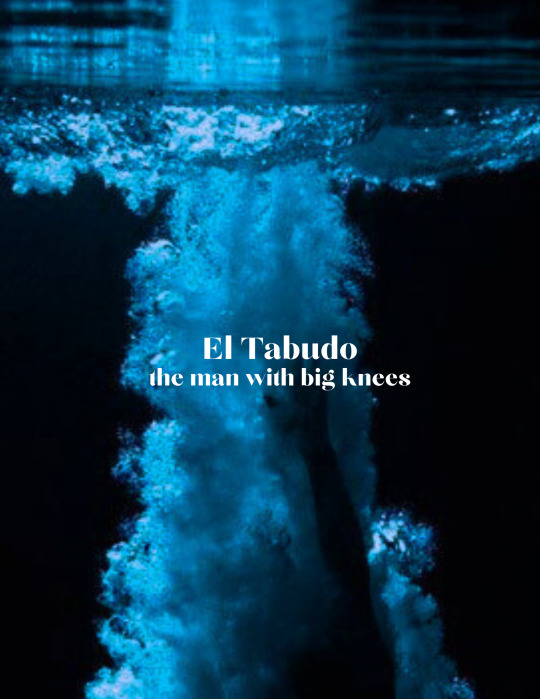
day 31 of horror mythologies: el tabudo
according to legend, he was once a wealthy fisherman who was one day taken by the sea, and eventually reappeared as something more fish than man, his signature being his large, knobby knees. he now awaits all visitors to lakes and lagoons, appearing to people as a humble fisherman in order to win over their trust and confidence so that he can lure them out to the middle of the lake. once he gets his victims where he wants them, he reveals his true appearance and turns the men into large, colorful fish and transforms the women into sirens of the sea.
79 notes
·
View notes
Text
Art Studio 2 Research: Potential inspiration for the additional sculptures
Jane Gavan and Jacky Redgate's feedback on Organic Space: "Well done, superb sound work! The visual imagery was poetic - theoretical underpinnings tremendous and outstanding commitment. A great research project and methodology around the subject of soundscape ecology and engaging with fieldwork and trips. The final chosen looped 3 sequences are still being realised but can be refined in Semester 2. The direction is for shorter experiential 'narrative sequence'. The sounds of the body is the last one yet unrealised. There is a lot to explore and develop how you will install your work for Semester 2, including sculptural possibilities, which wasn't realised yet in Semester 1. Push the sculptural and installation potential of your work. All the best for Semester 2! Jacky and Jane"
My thoughts from the feedback:
What about sculptures that can be interacted with to 'make sound'? (Perhaps leading the audience into the main exhibition room) - This will be addressed in this post and in future documentation.
Colours and shapes could mirror some of the animated forms/textures in the short film (and maybe other things in nature). - This will also be addressed in this post and in future documentation.
The soundscape in the 'terrestrial segment' of the short film needs to be explored/refined further, as does the overall installation and narrative sequence. - This will be addressed in future documentation.
Huaco Silbador (the Peruvian whistling vessel)
Created by various cultural groups in Peru from 500BCE to the 1500s.
The vessels were modelled after birds, other animals, or people.
Two different types: one that is single-chambered and another that is double-chambered.
You could either blow into it (both single-chambered and double-chambered) or fill it with water and tilt it back and forth (double-chambered). Both actions are demonstrated in the videos and diagrams below.
IDEA 1: Sculptures resembling the appearance of the environments/creatures making the sounds.
IDEA 2: Hollow interior to produce the sound?
youtube
youtube


Row 1: Ceramic whistling bottle - Muscovy (date unknown, AMNH Collection), Whistling bottle depicting maize deity (900-1400CE, National Museum of the American Indian)
Row 2: Double whistling bottle with jaguar figure (100-700CE, National Museum of the American Indian), Double-chambered ceramic whistling vessel - camelid/llama (date unknown, Smithonian National Museum of Natural History)
Row 3: Double-chambered ceramic whistling vessel - macaw with fruit (200BCE-600CE, Museo Larco)
Row 4: Monkey ceramic whistling bottle (200BCE-600CE, Museo Larco)
Row 5: Jaguar Whistling Jar (500-900CE, The Met Collection)
Row 6: Whistling Jar (200BCE-600CE, The Met Collection), Double-bodied ceramic whistling bottle - bat and spondylus shell (date unknown, AMNH Collection)


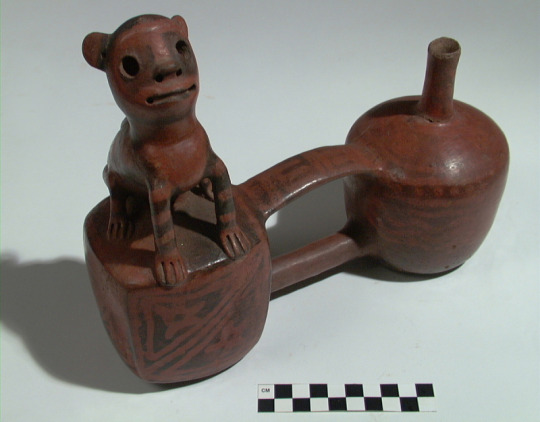




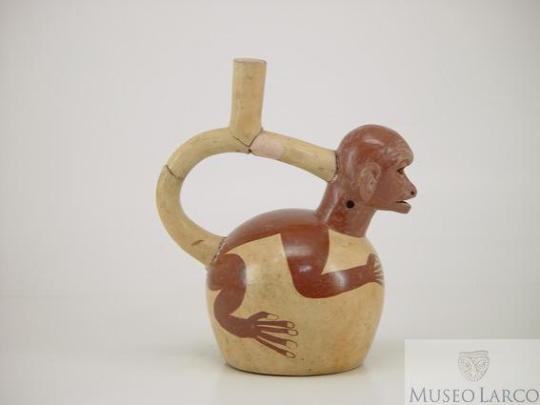
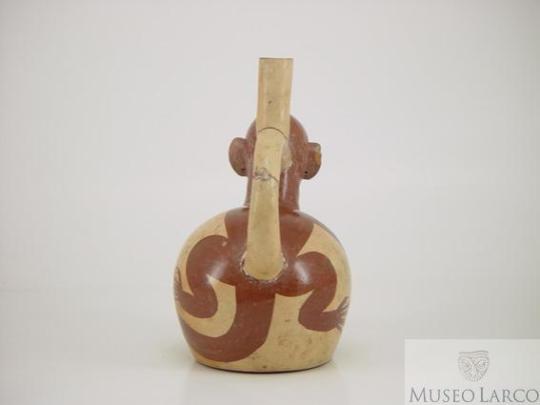

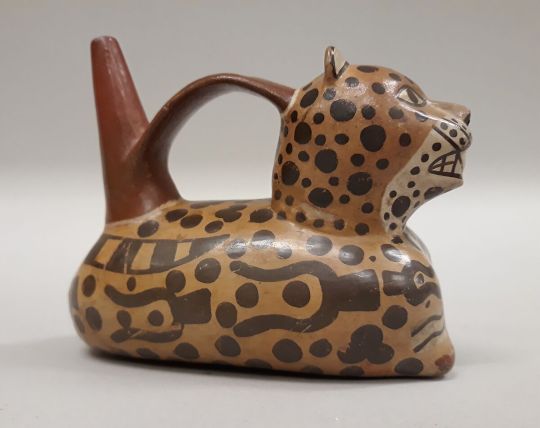


Artist Archive: Healing sound baths in Guadalupe Maravilla's body-of-work exhibition Luz y fuerza (2021)
Exhibition descriptions (from MOMA's website): ""I create new mythologies that take the form of real and fictionalised rituals based on my own lived experiences," says Guadalupe Maravilla. Two events from the artist’s life animate his work most of all: emigrating from his native El Salvador to the United States as an unaccompanied, undocumented eight-year-old and, later, surviving cancer. From this personal history grows a multidisciplinary practice that addresses trauma, contagion, rehabilitation, and rebirth.
This gallery—whose Spanish title translates as "hope and strength"—features works inspired by Mesoamerican myths and Salvadoran traditions. The sculptures are made from natural materials and ready-made objects selected for their therapeutic, historical, symbolic, and aesthetic properties. Maravilla sees them as healing instruments he can activate—and often does, especially for people experiencing illness and other hardships.
Disease Thrower #5 is a sculpture, a shrine, a wearable headdress, and an acoustic instrument. Like all works in the Disease Thrower series, it is, according to the artist, a "healing machine," which can be activated to create a sound bath with curative potential. It is made from both natural materials, such as straw and loofah, and man-made objects that Maravilla collected while retracing parts of the migratory route from El Salvador to the United States he took as a child. The work also includes anatomical models: one of a breast, another of a malignant tumour.
While undergoing treatment for cancer, Maravilla was introduced to sound therapy, a healing practice that uses vibrations produced by instruments. According to the artist, this practice “cleanse[s] the water in our bodies, which can carry stress, impurities, and, in some cases, diseases.” Now a trained sound healer, Maravilla regularly holds therapeutic sound baths for undocumented immigrants, cancer patients, and others in need. The gongs are tuned to specific frequencies intended to resonate with the moon and other planets in our solar system. Over the course of this exhibition, the artist will be regularly activating the sculptures in immersive sound bath sessions that visitors can sign up to attend."
Sound as healing/mediative?
Interaction to produce sound may not be limited to blowing air into hollow objects.
Luz y fuerza (multiple dates, sculptural body of work installation with performance)

Disease Thrower #5 (2019, sculpture - Gong, glass, steel, wood, glue mixture, cotton, wood, plastic, loofah, paint, straw, Florida Water, and objects collected from a ritual retracing the artist's original migration route)







#sca projects#year 3 art studio project 2#aa sca yr 3 sem 2 week 2#aa sca yr 3 sem 2 week 1#sca usyd new contemporaries grad show
0 notes
Text
Cerro El Pital y El Picacho, The High Points of El Salvador and San Salvador
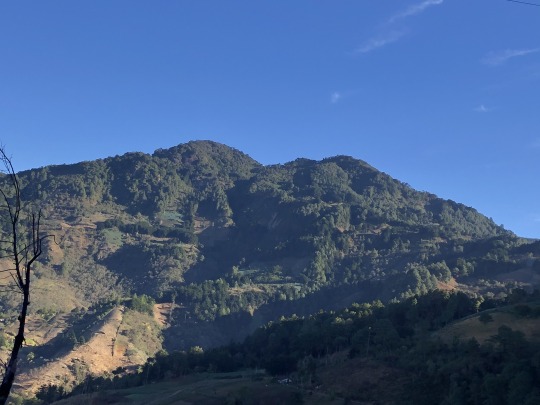
It took me 16 years, but I finally decided to return to my mother’s home country of El Salvador. The main purpose behind the trip was to introduce my new born son to my grandpa, but it wouldn’t be right to not hike several mountains while down there. I convinced Zach to fly down with my family, and he would be my hiking partner for most of the trip. He also joined on our previous trip to Guatemala, and had climbed a couple of volcanoes with me down there as well. I used Nahuat Tours as my guide service; they would arrange transport and the local guides when needed. There were some last minute complications due to the national election, which caused us to change our itinerary at the last minute, and while this would add some extra driving, the key objectives on my trip were still attainable. We planned to first climb Cerro El Pital in the morning, followed by El Picacho in the afternoon. Both were short hikes, so the challenge would be the long drive and dealing with the many unknowns of this developing country.
We were picked up at Cadedeu Residence at Lago de Coatepeque before sunrise. We first drove through San Salavdor and then up towards La Palma. We followed a steep but paved road up to Rio Chiquito.
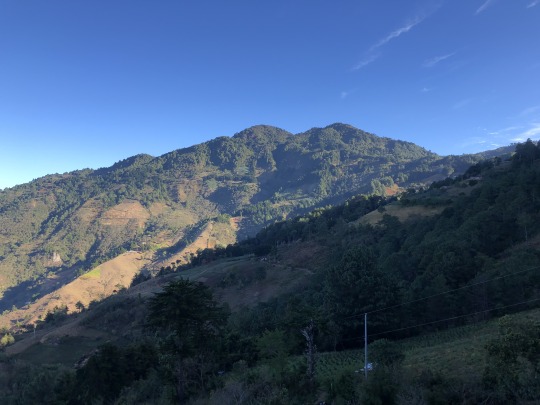
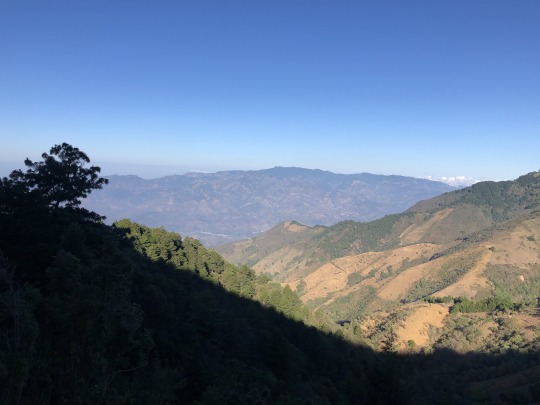
Our driver Eric parked at a dirt lot along Calle El Pital. We could have driven further, but we were here to hike and were already less than 2 miles from the summit. From here Gerardo would show us the way to the summit. Shortly after starting out, I noticed a snake that was run over by a vehicle, reminding me that it’s probably best to stay on the cleared path. Shortly after we reached the park boundaries where Gerardo paid our entrance fees.
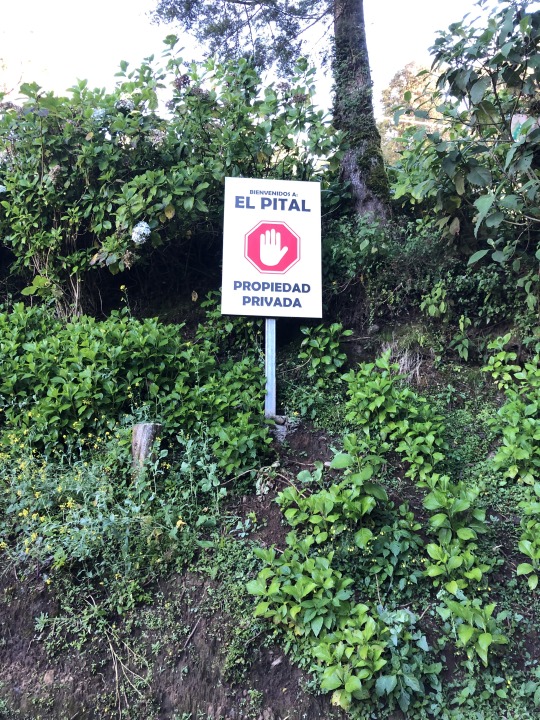
I was told to pack warm gear, as this is the coldest place in the country, but I found myself sweating profusely.
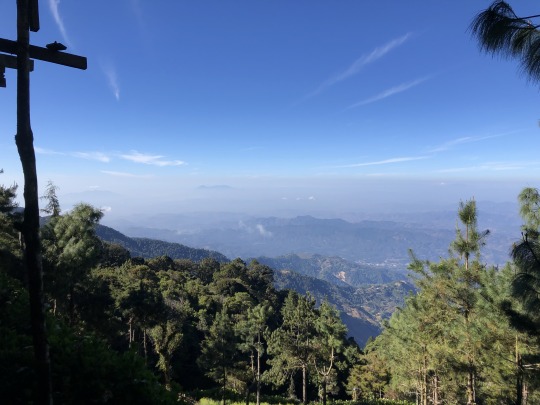
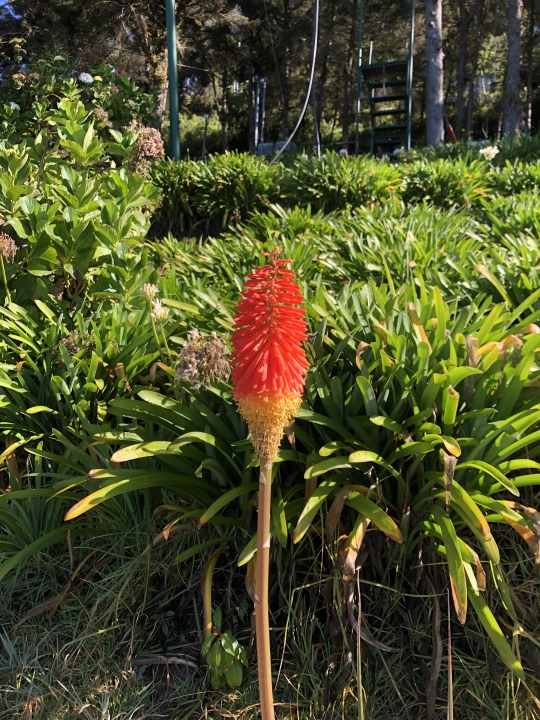
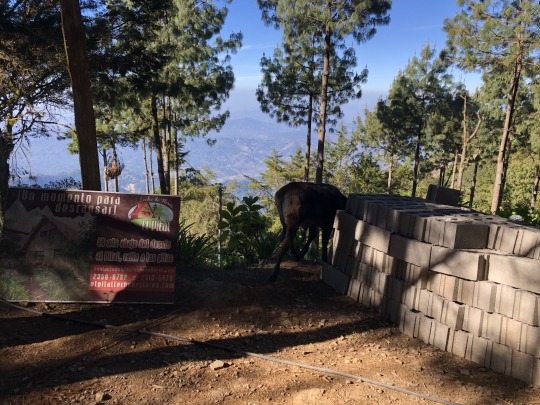
At the top of the road, Gerardo started taking us towards the lower southeast summit. I immediately objected, stating that the northwestern summit was higher. He agreed, but for some reason was hesitant to go further. He stated that he wasn’t sure how to get there, and said he would go ask someone. My stress levels skyrocketed, as failing on this easy peak was my worst nightmare. Gerardo came back confirming that there was a way to the summit, but that we shouldn’t follow the road. I learned later that Gerardo had been attacked by a dog along this same road on a previous trip. We instead dropped down to a grassy field at the saddle between the main peak and the false summit.
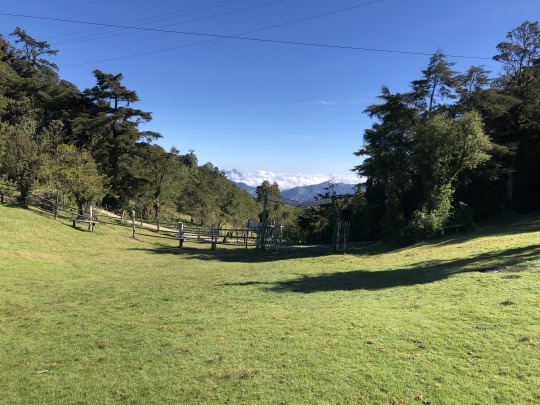
We followed a foot path that passed next to some buildings. Many homes were in the process of being built, and I expect this area to look much different in a few years. We popped out back onto the original road, and with the threat of the barking dog behind us, we continued upwards. The views opened up as we climbed higher, and it appeared that we were the only ones visiting the summit that day. We followed the main road all the way to the summit structure, where there were several guard dogs barking at us ravenously.
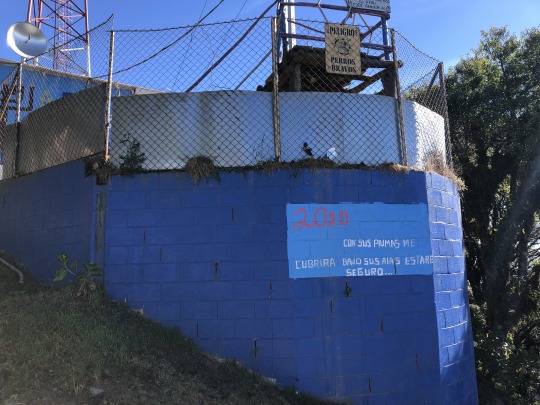
They were locked within the gate, so I paid them no heed. I found the benchmark embedded in a small concrete pedestal just to the left of the building.
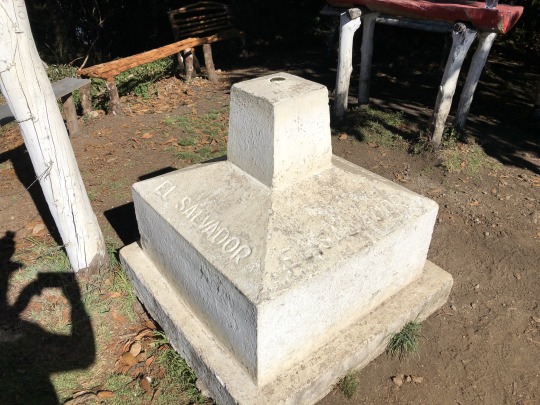
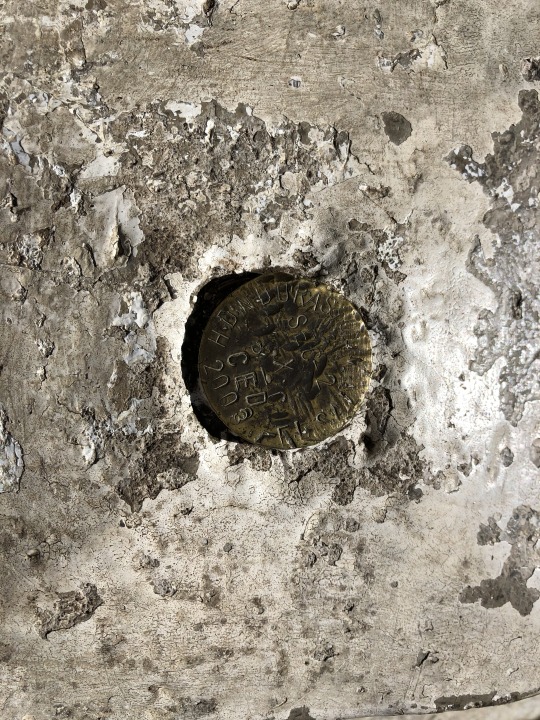
To the east was Honduras.

To the south-southeast was Chinchontepec, also known as San Vincente Volcano.
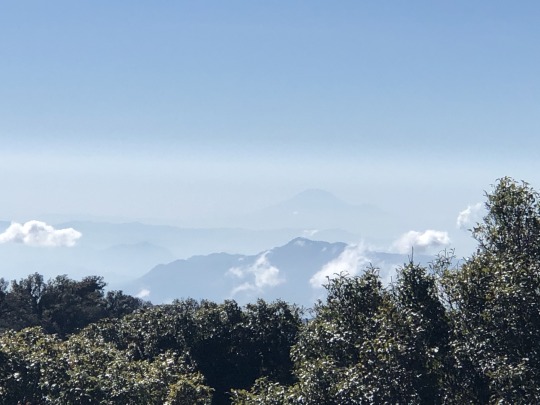
To the south-southwest were El Picacho and El Boquerón, also known as San Salvador Volcano.

I had expected to find armed guards at the summit, but we were the only ones around. I guessed that all police were being mobilized elsewhere in preparation for the elections the following day.
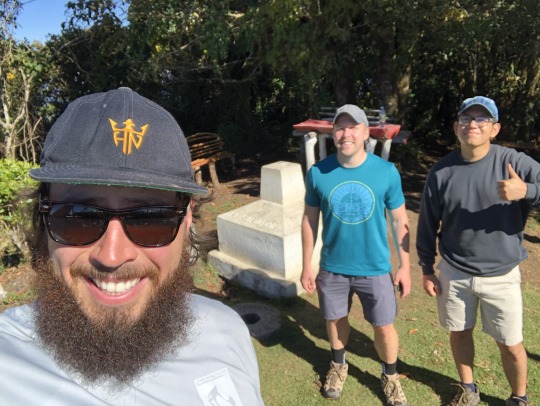
As this was also the border of Honduras, I took the liberty to walk into the aforementioned country. I did a small loop through the forest, checking another country off my list.
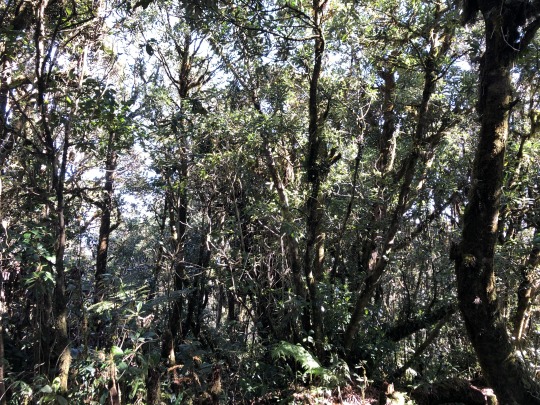
We hung out at the summit for a while, enjoying the peaceful and temperate setting.
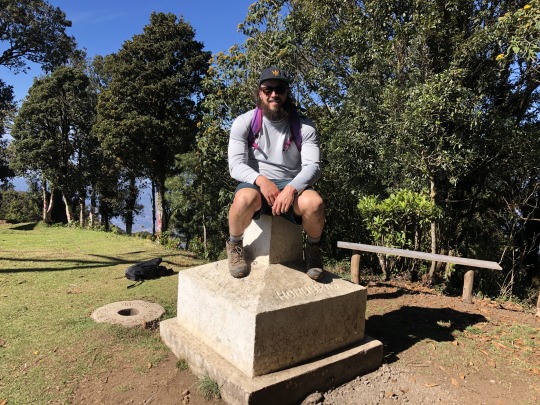
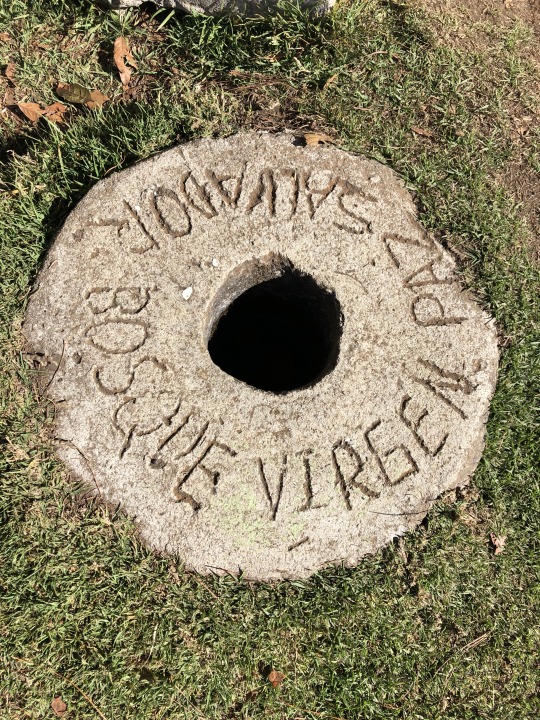
We started back down the road once we were satisfied. The cacophony of barking started up again as we passed by the building, but soon we were beyond the nuisance.
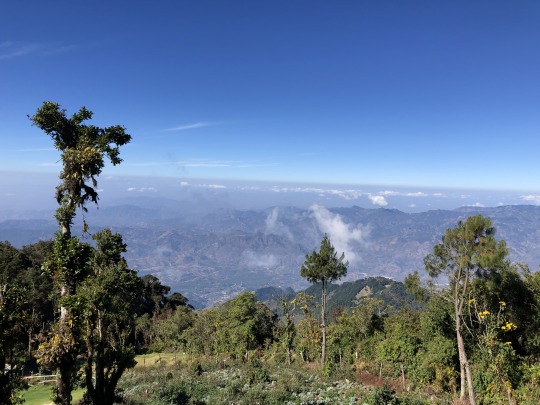
We stopped along the way to visit a second benchmark that also marked the border between El Salvador and Honduras. This was in the middle of some crops so we gingerly walked around it.
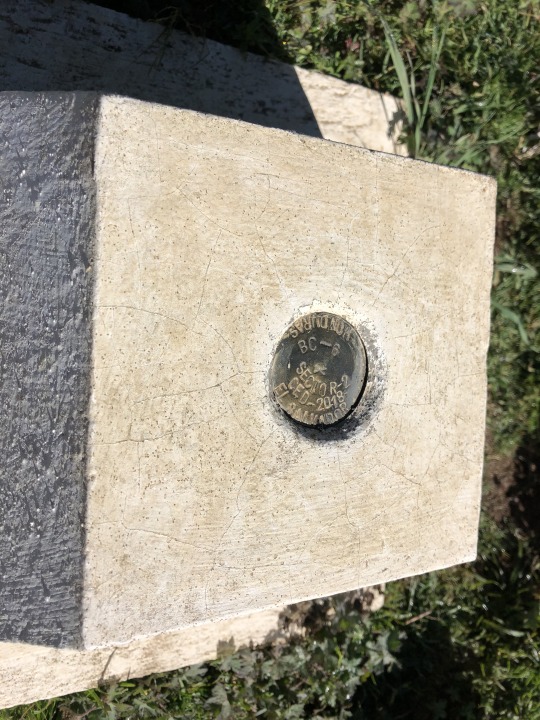
Once back at the saddle, I could finally relax and enjoy the great views.
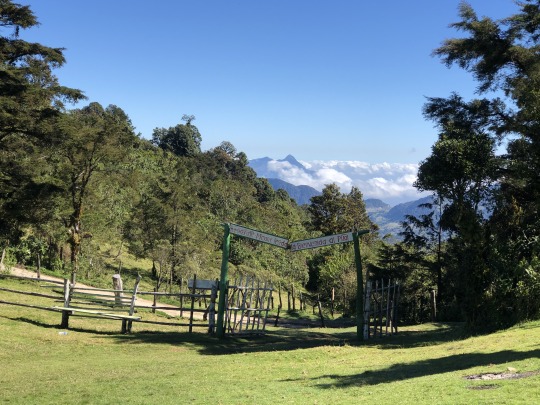
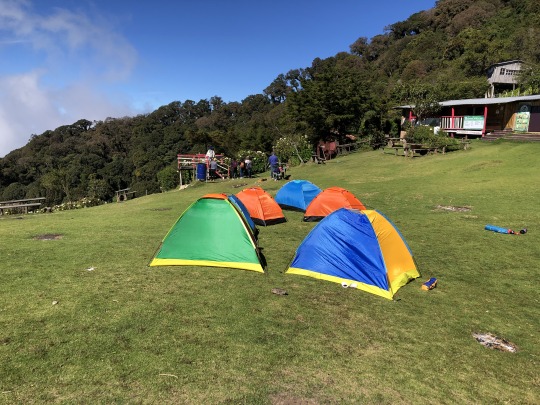
We considered exploring a potential bonus rock, but at the end decided against it. We couldn’t see any worthy rock outcropping from our vantage point, and I didn’t see anything on my satellite view. Instead we had brunch at one of the restaurants consisting of pupusas and coffee. We found Eric waiting for us at the top of the road when we finished, and we began our drive back down to La Palma where we stopped to buy some souvenirs.
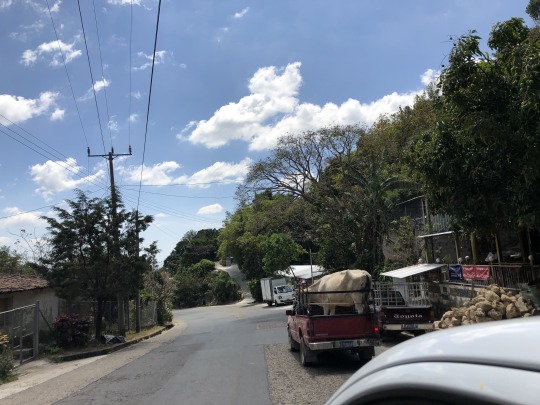
After another long drive we arrived at the trailhead for El Picacho. There was no information of this hike online, so I wasn’t sure what to expect. Here we met our local guide Chico at a roadside pupuseria at the saddle between El Picacho and El Boquerón. We started up a local trail through a coffee plantation.

-El Picacho

We hiked at an aggressive pace. Chico took the lead with his machete in hand. He would stop from time to time to tell me the local folklore, which really interested me. La Siguanaba was apparently seen in this area. This shapeshifter is viewed as an attractive woman who is often seen bathing in the river. She invites enticed men to come bathe with her, but as soon as they come close enough, she turns her head and reveals her terrifying face, which is sometimes depicted as a horse or a skull. The terrifying sight makes the men go crazy. This story is most likely used to deter unfaithful men from drinking and chasing other women. Often accompanying La Siguanaba is El Cipitio, her baby with a round belly and big sombrero. He doesn’t do much aside from throw flowers at women’s feet, but he seems to creep out many Salvadoran woman, including my mother. Chico then told me about El Gritón de la Medianoche, which translates to the yell of the middle of the night. This creature is apparently a very tall man with a mouth like a trumpet who screams incredibly loud. When he is far away, his scream seems to be coming from nearby. I found this fascinating as this is somewhat similar to North American bigfoot mythology; a tall humanoid screaming though the forest in the night.
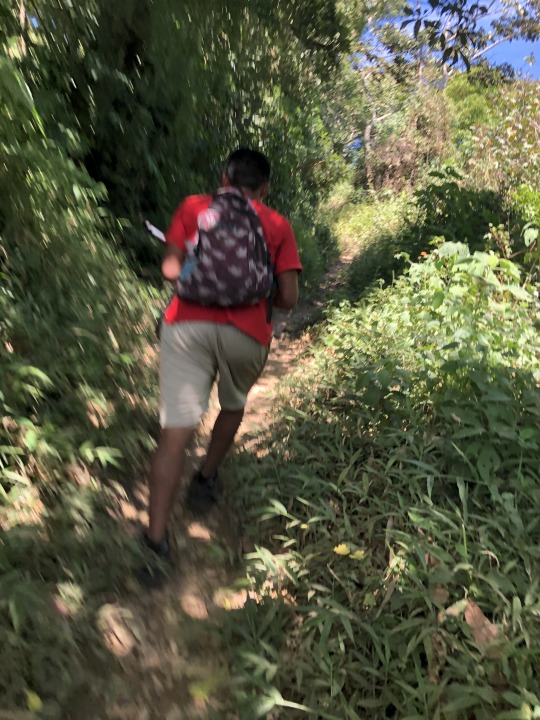
Chico stopped to show us some coffee beans growing alongside the trail.
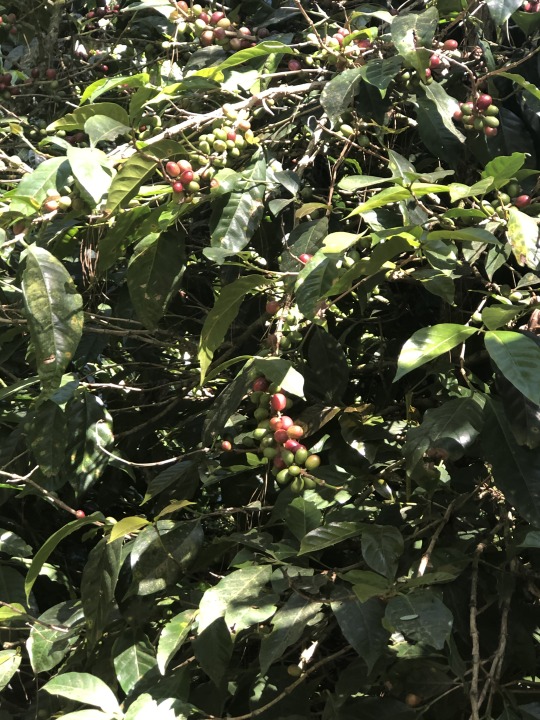
Gerardo explained how the beans can be prepared. Some European countries prefer the beans with the husk, while American coffee companies prefer the beans without. The beans are typically left in the sun to dry for a few weeks before they are exported. Gerardo then instructed us to suck on the bean, and we tasted the natural honey flavor from within the husk.
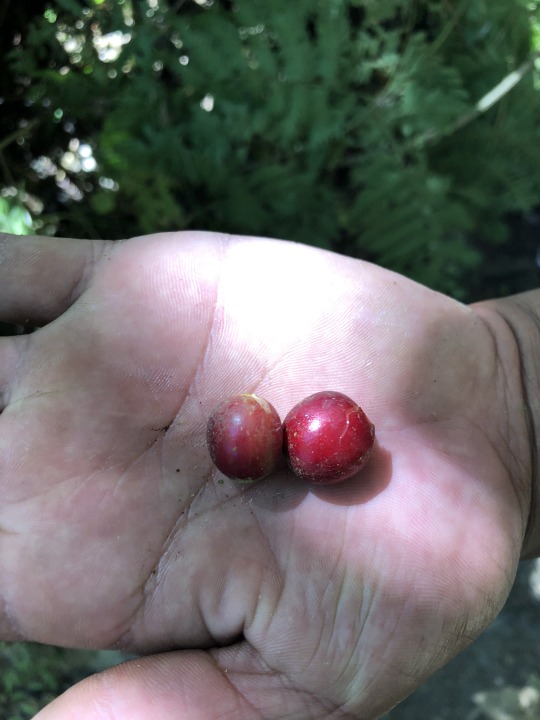
I’m not much of a coffee drinker so most of the dialogue went in one ear and out the other, but I think the average cafephile would find it quite interesting.
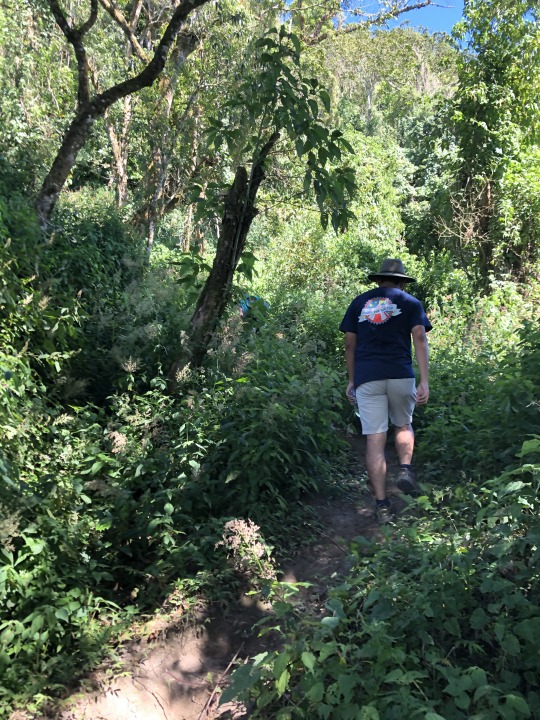
I took note of a pointy peak along the coast, which I believe was El Peñon de Comasagua.
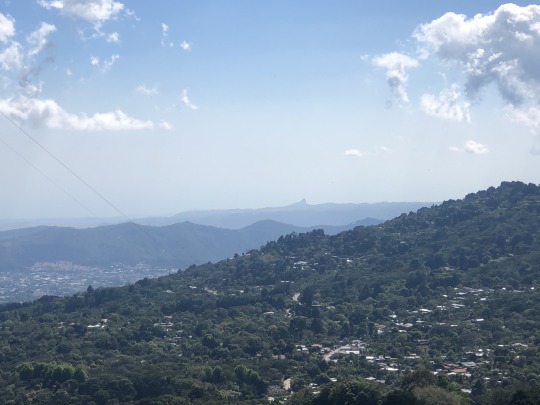
We reached a trail junction along the ridge where we also found an abandoned battery. Apparently these fortifications were not utilized much during the civil war as the Guerrillas never really contested this territory.
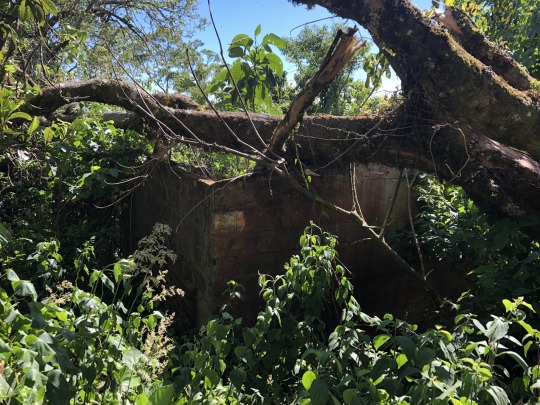
We stopped at a clearing where we had great views of San Salvador below.
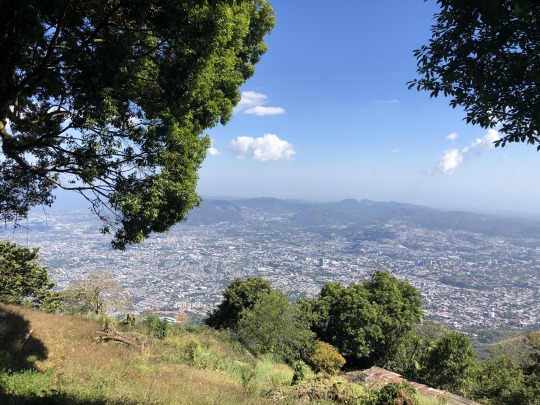
-Chinchontepec y Lago de Ilopango
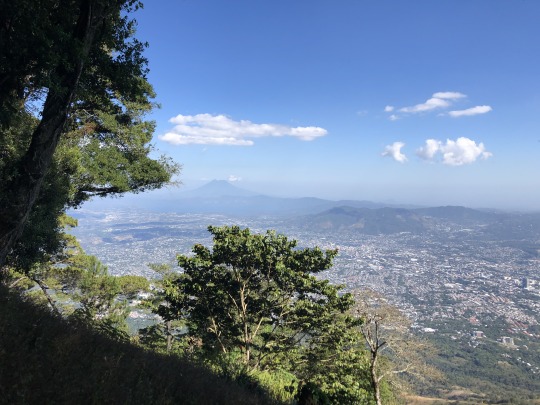
I found a rope swing here, and it felt appropriate to risk my life on it.
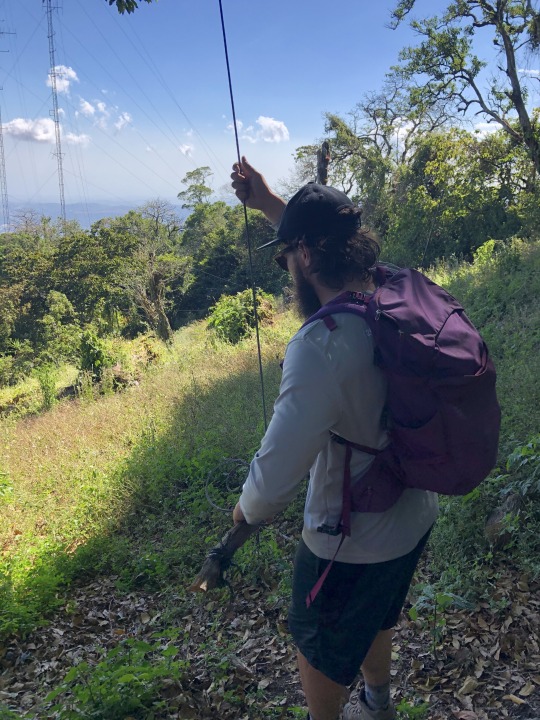
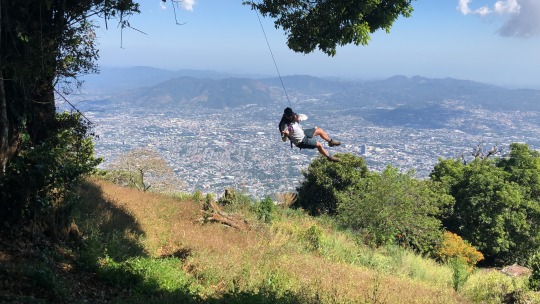
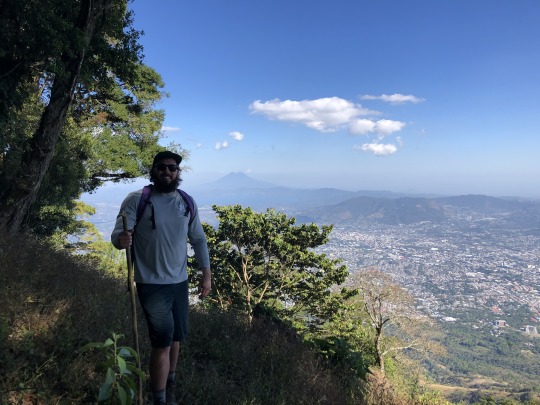
Chico then climbed a tree and cut off a plant with his machete. I still don’t know why.
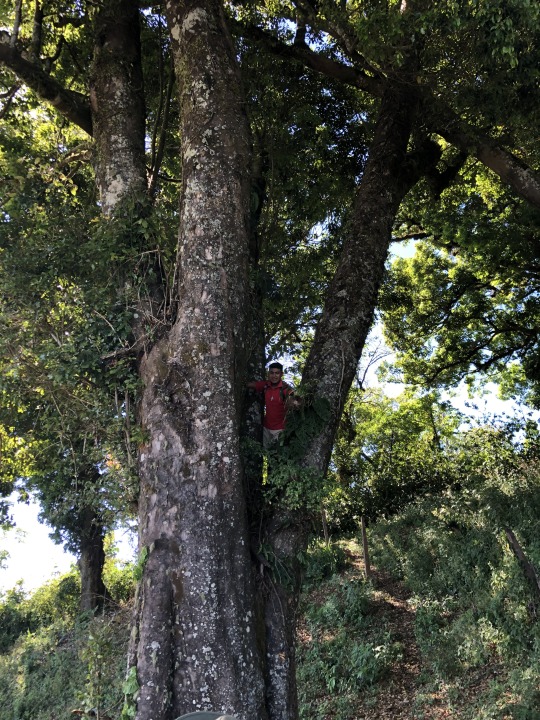
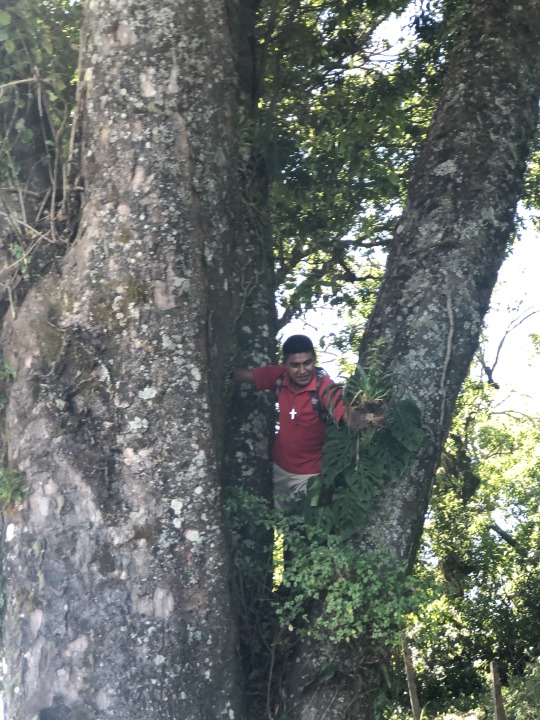
We continued along the trail, walking past a tree stand. I don’t think this was used for hunting animals.
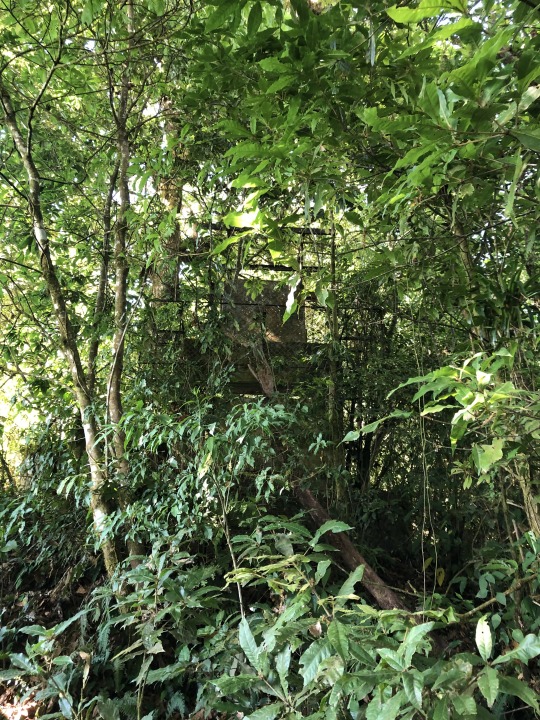
As we followed the trail underneath the eastern side of the peak, we heard a high pitched sound somewhere up ahead. I at first thought it was a bird, but as I listened more closely, it was someone squawking, “Ay loco, ay loco.” Chico immediately stopped and motioned us to be silent. He went off ahead by himself, machete in hand. I was very concerned for the few seconds he was gone. Upon his return he stated, “No te preocupes, solo es un bolito,” or “Don’t worry, it’s only a little drunk.” We continued forward, and just off the trail below us in a thicket was the bolito, yapping to himself. They say that the homemade moonshine brewed here makes people hallucinate and gives many young people sepsis. Or perhaps he simply saw La Siguanaba.
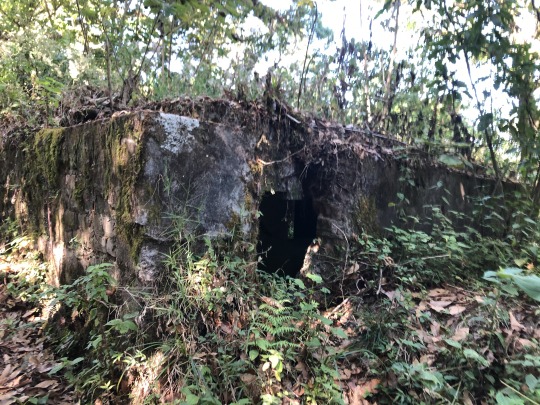
The trail eventually led to a road, which we followed a short distance to the radio structure at the top.
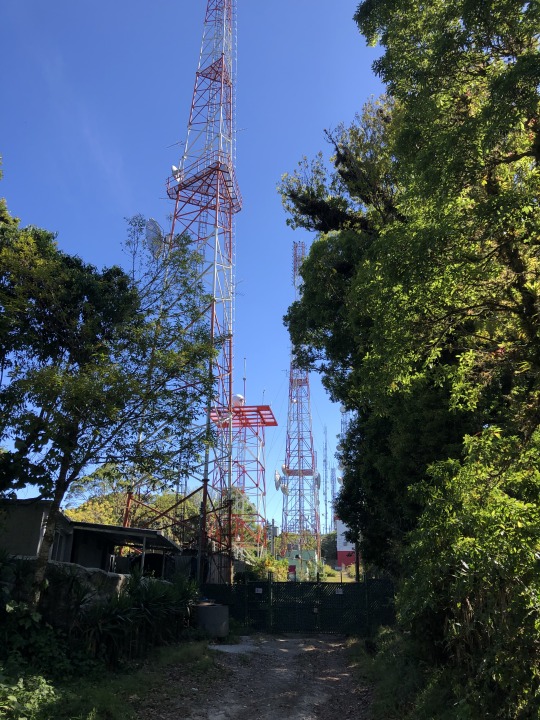
Again my stress skyrocketed. There was a watchperson, several guard dogs and a fence surrounding the radio facility. No trespassing signs were posted along the gate. We asked the watchperson if we could continue to the top, but he denied us, stating that there were security cameras throughout the summit complex.
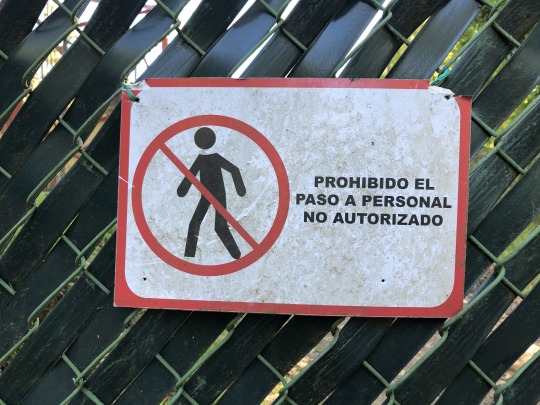
I was disappointed to say the least, so I went to the highest legally accessible point and snapped a photo.
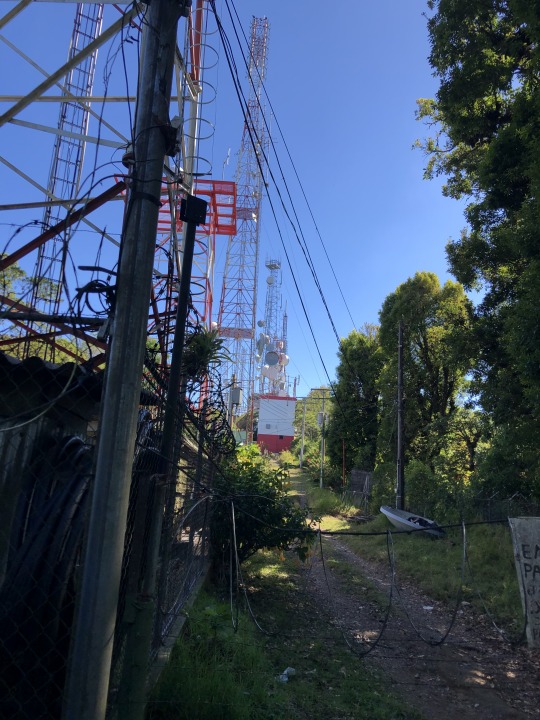
I stood there for a while, but there was no way around it. In my mind, I tried to justify the failure as a valiant effort nonetheless. My mind raced as I walked back down the road. I wondered if I could somehow still reach the summit while staying outside of the enclosure. I asked Chico if I was allowed to try from another angle, and he hesitantly agreed suggesting that it would be fine so long as I didn’t cross the fence. Before he could change his mind, I began bushwhacking up the steep and loose east facing jungle slopes towards where I expected the summit to be. Snakes and guerrillas filled the back of my mind, while in reality all I had to contend with was thick brush and garbage. It seems that some of the tower workers simply throw their trash over the fence. I pulled on small trees and avoided stepping on the empty liquor bottles. At the end I was swimming through a grassy bush, and I eventually popped out at the fence, which was also the bulldozed high point.
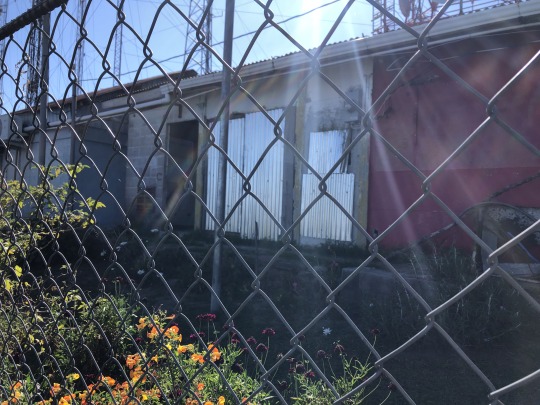
With my heart racing, I snapped a few photos. I should have been more patient, but the dogs from inside the complex were on to me. They had started barking, so as not to arouse further suspicion, I returned to the thicket.
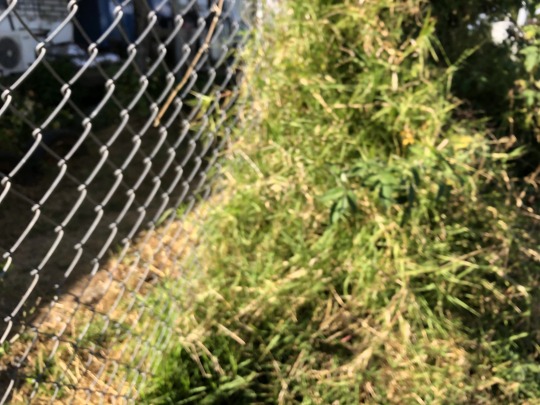
I snapped one last photo of Chinchontepec, Lago de Ilopango and San Salvador before descending.
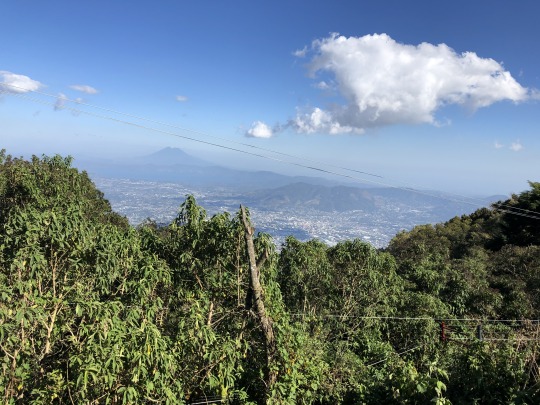
What a relief! I carefully descended the steep slope, but not carefully enough. I dislodged a big boulder from underneath the dirt, and this accelerated quickly towards where the others were waiting for me. I yelled rock, but Guillermo stood there like a deer in the headlights. Luckily, this boulder flew right past him and no one was hurt. The boulder continued to thrash down the steep volcano, and it’s probably still falling today. The other’s looked at me as if I was some sort of lunatic, and maybe they are right.
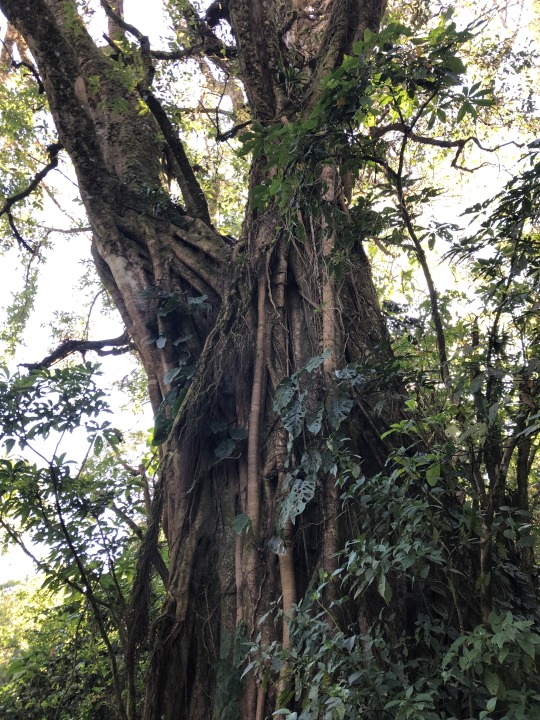
Our descent went quickly and soon we were back down at the saddle looking up at El Picacho.
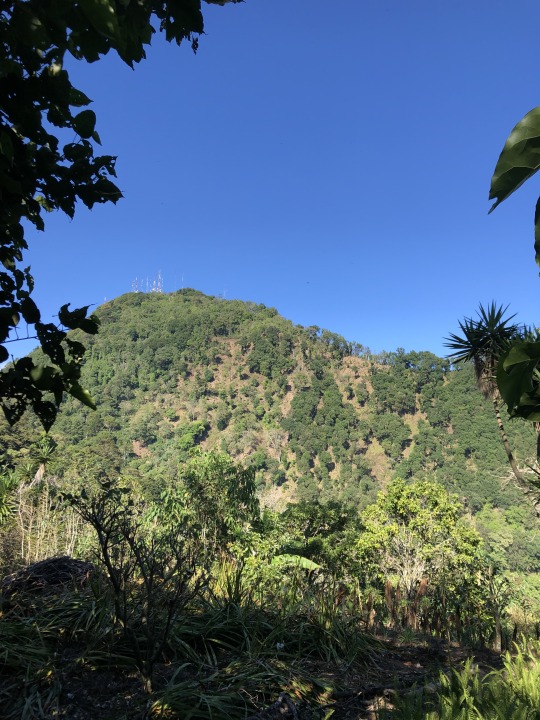
I had wanted to climb El Boquerón as well, which is the crater of the greater San Salvador Volcano, however there were some challenges. While it is possible to hike to the highest point along the crater, it’s currently not the safest thing to do. Gerardo expects that in a few more years, the national park service will clean up the area, making it safer for hikers.
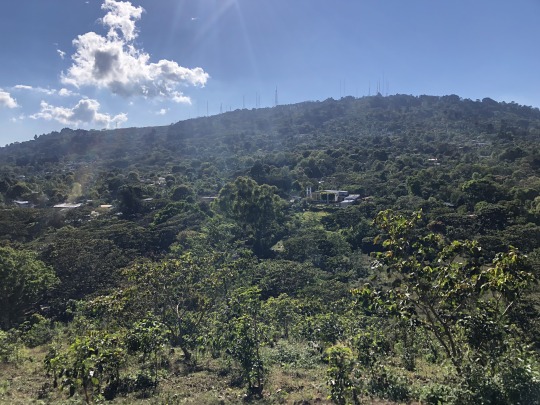
-Berries
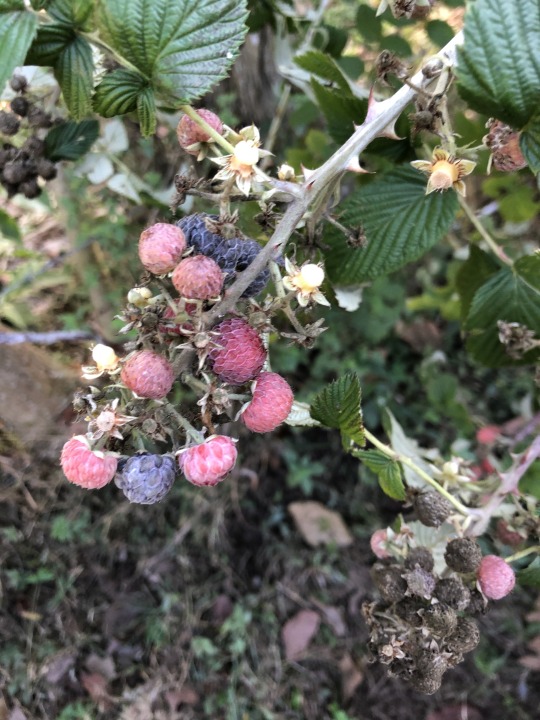
Once at the bottom, we ordered some yuca and chatted with the locals.
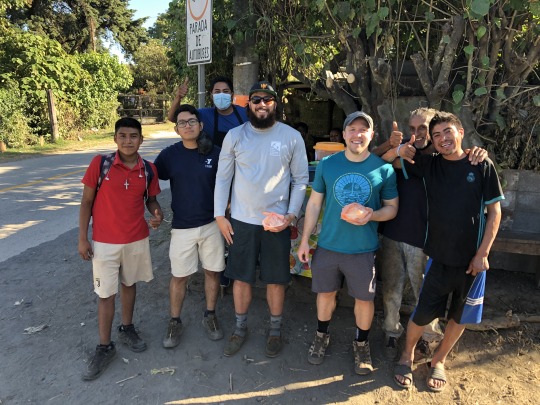

Zach got his yuca with chicharón and I got mine with Pepescas. Zach made the smarter decision, as I got pretty sick afterwards, so for all future hikers, get the pork!
2 notes
·
View notes
Text
What's Wrong with Chris Hedges view that ‘Antifa’ Mirrors the ‘Alt-Right’
What's Wrong with Hedges view that ‘Antifa’ Mirrors the ‘Alt-Right’
I am quoting here most of the recent essay by Hedges on truthdig, interspersed with my own comments in italics explaining why his ideas and definitions are false, incorrect and misguided–MN
‘Antifa’ Mirrors the ‘Alt-Right’
Chris Hedges
Behind the rhetoric of the “alt-right” about white nativism and protecting American traditions, history and Christian values is the lust for violence. Behind the rhetoric of antifa, the Black Bloc and the so-called “alt-left” about capitalism, racism, state repression and corporate power is the same lust for violence.
FALSE. First, nobody calls the antifa the "alt-left" except Trump and the white nationalists, and people who buy into their rhetoric. "Alt-right," not modified by Hedges as "so-called," is a propagandistic self-moniker adopted by the neo-nazis to disguise and sanitize their racism and white nationalism.
Second, the antifa are not motivated by a "lust for violence," but by a desire to defend themselves and others who are targets of racist, sexist violence by fascists, and to disrupt the strategic, intimidating use of violence by fascists.
Third, as Hedges well-knows and has written himself, fascist talk of "white nativism and ...American ...history" is not mere rhetoric, but is in fact directly related to their roots in the use of violence to establish white 'nativism' (an oxymoron) through settler-colonial 'American' history.
The two opposing groups, largely made up of people who have been cast aside by the cruelty of corporate capitalism, have embraced holy war.
FALSE: The bulk of the fascist forces marching in Charlottesville and elsewhere have been, not people thrust aside by capitalism, but quite privileged white males, many collegians or petty bourgeois intent on proving they are not just Internet trolls but IRL fascists. The antifa have in no way embraced 'holy war' but thoughtfully adopted security culture and physical disruption of fascists among many other perfectly non-violent tactics, based on their proven efficacy on other occasions and in other countries in disorienting and defeating fascists.
No antifa caused Dylann Roof to get a gun, go to a Black church in South Carolina, and cold-bloodedly execute 9 unarmed women and men he had just attended a prayer and bible study session with.
Conversely, I defy Hedges to name a single white racist killed or maimed by any antifa or other resisters, even in self-defense, let alone an ambush, assassination or execution.
Their lives, battered by economic misery and social marginalization, have suddenly been filled with meaning. They hold themselves up as the vanguard of the oppressed. They arrogate to themselves the right to use force to silence those they define as the enemy. They sanctify anger. They are infected with the dark, adrenaline-driven urge for confrontation that arises among the disenfranchised when a democracy ceases to function.
They are separated, as Sigmund Freud wrote of those who engage in fratricide, by the “narcissism of minor differences.”
FALSE: For Hedges to say the differences between fascists and antifa are 'minor,' is to equate resistance with oppression. Fascists glorify violence as proof of white supremacy, and uphold genocide, ethnic cleansing and a white ethno-nationalist state. Antifa, whose ranks include people of color, women, Jews, queer and trans people and others targeted by the Nazis, are anti-racist and mostly anti-capitalist. Equating the two is being an apologist for racism, fascism and genocide, and must be denounced. Also, antifa do not see themselves as a “vanguard,” and most oppose vanguardism. Antifa see themselves as practitioners of one strategic or tactical approach to dealing with fascism in public spaces, cyber space and elsewhere, and hope that others whom they defend and whose backs they have, will treat and welcome them as such. They are willing to and capable of working with others who have a non-violent approach (but not “peace police” types who in the name of non-violence turn antifa over to the cops).
They mirror each other, not only ideologically but also physically—armed and dressed in black, the color of fascism and the color of death.
FALSE: Black is beautiful.
It was inevitable that we would reach this point.
FALSE: This is Hedges's constant litany of despair and defeatism, a refusal to examine the political choices, complacency and complicity that have empowered the neo-Nazis
The corporate state has seized and corrupted all democratic institutions, including the two main political parties, to serve the interests of corporate power and maximize global corporate profits. There is no justice in the courts. There is no possibility for reform in the legislative bodies. The executive branch is a dysfunctional mess headed by a narcissistic kleptocrat, con artist and pathological liar. Money has replaced the vote. The consent of the governed is a joke. Our most basic constitutional rights, including the rights to privacy and due process, have been taken from us by judicial fiat. The economically marginalized, now a majority of the country, have been rendered invisible by a corporate media dominated by highly paid courtiers spewing out meaningless political and celebrity gossip and trivia as if it were news. The corporate state, unimpeded, is pillaging and looting the carcass of the country and government, along with the natural world, for the personal gain of the 1 percent. It daily locks away in cages the poor, especially poor people of color, discarding the vulnerable as human refuse.
A government that is paralyzed and unable and unwilling to address the rudimentary needs of its citizens, as I saw in the former Yugoslavia and as history has shown with the Weimar Republic and czarist Russia, eventually empowers violent extremists.
FALSE: The US government is not weak or paralyzed but is in fact, throughout the federal system, an active agent of oppression and repression, and enforcer of exploitation; and this fundamental reality has not changed since the establishment of the European settler colonies here, or their consolidation into a federal empire state.
Also, posing the problem as "extremism," is part of the false equivalence of the left and right and presumes an answer will arise from some mythological center or from restoration of "Constitutional" government.
Economic and social marginalization is the lifeblood of extremist groups. Without it they wither and die. Extremism, as the social critic Christopher Lasch wrote, is “a refuge from the terrors of inner life.”
Germany’s Nazi stormtroopers had their counterparts in that nation’s communist Alliance of Red Front Fighters. The far-right anti-communist death squad Alliance of Argentina had its counterpart in the guerrilla group the People’s Revolutionary Army during the “Dirty War.” The Farabundo Marti National Liberation Front (FMLN) rebels during the war I covered in El Salvador had their counterparts in the right-wing death squads, whose eventual demise seriously impeded the FMLN’s ability to recruit. The Serbian nationalists, or Chetniks, in Yugoslavia had their counterparts in the Croatian nationalists, or Ustaše. The killing by one side justifies the killing by the other. And the killing is always sanctified in the name of each side’s martyrs.
FALSE: The unutterable mendacity of Hedges is unconscionable, equating as he does the Nazi storm-troopers with working-class resistance fighters in Germany, or FMLN guerrillas with the Salvadoran death squads trained and financed by the US. What children of military officers orphaned by having their parents killed and dropped into the sea by helicopters were adopted and raised by Argentine leftists? What genocide or terrorist attacks on unarmed Jewish, Roma, or trade-unionist civilians were ever carried out by Germany's Red Front Fighters? What mass executions of peasants or workers, or assassinations of priests and nuns, were ever carried out by the FMLN? None.
The violence by antifa—short for anti-fascist or anti-fascist action—in Charlottesville, Va., saw a surge in interest and support for the movement, especially after the murder of Heather Heyer. The Black Bloc was applauded by some of the counterprotesters in Boston during an alt-right rally there Aug. 19. In Charlottesville, antifa activists filled the vacuum left by a passive police force, holding off neo-Nazi thugs who threatened Cornel West and clergy who were protesting against the white nationalist event.
FALSE: The state, embodied in law enforcement, is not and has never been passive in these situations. Their refusal to protect anti-fascists, their protective cordons for fascists, and their use of brutality, militarized weaponry and criminalization of protest against the left is long-standing and routine.
This was a propaganda coup for antifa, which seeks to portray its use of violence as legitimate self-defense. Protecting West and the clergy members from physical assault was admirable. But this single act no more legitimizes antifa violence than the turkeys, Christmas gifts and Fourth of July fireworks that John Gotti gave to his neighbors legitimized the violence of the Gambino crime family. Antifa, like the alt-right, is the product of a diseased society.
FALSE: Hedges's use of 'disease' as a descriptor of 'society' is another give-away of the fascistic bent of his own thinking. Antifa are neither diseased nor a product of a 'disease' in society. It is the fascists and the US ruling class who are like the Mafia, not antifa.
The white racists and neo-Nazis may be unsavory, but they too are victims. They too lost jobs and often live in poverty in deindustrialized wastelands. They too often are plagued by debt, foreclosures, bank repossessions and inability to repay student loans. They too often suffer from evictions, opioid addictions, domestic violence and despair. They too sometimes face bankruptcy because of medical bills. They too have seen social services gutted, public education degraded and privatized and the infrastructure around them decay. They too often suffer from police abuse and mass incarceration. They too are often in despair and suffer from hopelessness. And they too have the right to free speech, however repugnant their views.
FALSE: White racists and neo-Nazis are not just 'unsavory,' and it's not a question of taste. This sympathetic treatment of a litany of alleged woes they face reinforces their attempt to cast themselves as injured victims. None of their concerns or demands speak to any of these issues that he alleges they face. They perceive themselves as victims of feminism and race-mixing, a so-called and non-existent 'white genocide.' And their 'speech' is designed to threaten and incite violence against Black people, Mexican@s and other migrants, Jews, Muslims, Asians, women, LGBTQ and disabled people (and Hedges).
Street clashes do not distress the ruling elites. These clashes divide the underclass. They divert activists from threatening the actual structures of power. They give the corporate state the ammunition to impose harsher forms of control and expand the powers of internal security. When antifa assumes the right to curtail free speech it becomes a weapon in the hands of its enemies to take that freedom away from everyone, especially the anti-capitalists.
FALSE: The state needs no excuses to expand the powers of 'internal security.' And such an argument could and has been as easily made, including by the state, against the non-violent disruptive civil disobedience tactics of Black Lives Matter (or for that matter, Martin Luther King, Jr.). In fact, Martin Luther King Sr. (father of the civil rights icon), was the target of surveillance by federal law enforcement and military intelligence operatives before World War II.
The focus on street violence diverts activists from the far less glamorous building of relationships and alternative institutions and community organizing that alone will make effective resistance possible. We will defeat the corporate state only when we take back and empower our communities, as is happening with Cooperation Jackson, a grass-roots cooperative movement in Jackson, Miss. As long as acts of resistance are forms of personal catharsis, the corporate state is secure. Indeed, the corporate state welcomes this violence because violence is a language it can speak with a proficiency and ruthlessness that none of these groups can match.
FALSE: I support Cooperation Jackson. I have been in solidarity with the Malcolm X Grassroots Movement that helped initiate it for decades. They, as I, have always expressly supported armed self-defense against white supremacist violence in the South and elsewhere. They, as I, have long supported the political prisoners of US imperialism, including the freedom-fighters of the Black Liberation Army. They called a demonstration here in Los Angeles in 1992 to protest and shut down a forum called by a Black pseudo-nationalist fronting for a group of neo-Nazis and Hitler apologists. (That Black-led community demonstration was attacked by the LAPD in an incident that helped set the stage for the rebellion later that year, after the acquittal of the cops who beat Rodney King and slap on the wrist for a grocer who killed Black teenager Latasha Harlins.)
Also, antifa are A) not engaged in street fighting because it is any way 'glamorous;' and B) also engaged in the equally unglamorous programs of community gardening, political education and study, community defense, cop-watching, self-defense classes, tenant organizing, etc. etc. (just like Cooperation Jackson and the MXGM).
“Politics isn’t made of individuals,” Sophia Burns writes in “Catharsis Is Counter-Revolutionary.” “It’s made of classes. Political change doesn’t come from feeling individually validated. It comes from collective action and organization within the working class. That means creating new institutions that meet our needs and defend against oppression.”
TRUE, BUT IRRELEVANT: Antifa are not aiming at individual catharsis or self-validation; they are building exactly that sort of class-struggle organization and network.
The protests by the radical left now sweeping America, as Aviva Chomsky points out, are too often little more than self-advertisements for moral purity.
FALSE: Hedges, one of the most sanctimonious and self-righteous of all commentators in what passes for a 'left' in the US, is here simply projecting his own need for self-advertisement and moral purity, conveniently doing so by quoting a woman.
They are products of a social media culture in which each of us is the star of his or her own life movie. They are infected with the American belief in regeneration through violence and the cult of the gun. They represent a clash between the bankruptcy of identity politics, which produced, as Dr. West has said, a president who was “a black mascot for Wall Street,” and the bankruptcy of a white, Christianized fascism that produced Donald Trump, Steve Bannon and Jefferson Beauregard Sessions.
FALSE: Before I call it a day on Hedges and his tedious, tendentious obfuscations that serve to echo right-wing self-justifications and propaganda against resistance, let me point out that 'Identity politics' and 'political correctness' were both slogans that originated within sectors of the (mostly academic) left resistant to self-criticism and to the self-determined liberation struggles of colonized and other oppressed people. The slogans were then taken up by and popularized by George H. W. Bush and a host of right-wing talk radio commentators and then FOX News, while still being persisted in by reactionaries in left clothing like Todd Gitlin and apparently by Hedges, Aviva Chomsky and Noam Chomsky, among others. Corporate liberalism and neo-liberalism are responsible for Barack Obama and Hillary Clinton (and therefore, to a great extent, for DJ Chump). Antifa or other radicals are not to blame.
The corporate state seeks to discredit and shut down the anti-capitalist left. Its natural allies are the neo-Nazis and the Christian fascists. The alt-right is bankrolled, after all, by the most retrograde forces in American capitalism. It has huge media platforms. It has placed its ideologues and sympathizers in positions of power, including in law enforcement and the military. And it has carried out acts of domestic terrorism that dwarf anything carried out by the left. White supremacists were responsible for 49 homicides in 26 attacks in the United States from 2006 to 2016, far more than those committed by members of any other extremist group, according to a report issued in May by the FBI and the Department of Homeland Security. There is no moral equivalency between antifa and the alt-right.
TRUE, BUT TOO LITTLE TOO LATE: After spending most of his essay equating antifa and fascists, Hedges gets around to acknowledging that there is no "moral equivalency" between the two. But he undercuts his argument by saying the Nazis' terrorism " dwarf[s] anything carried out by the left," without citing any terrorism carried out by the left; (he can't because there is none).
But by brawling in the streets antifa allows the corporate state, which is terrified of a popular anti-capitalist uprising, to use the false argument of moral equivalency to criminalize the work of all anti-capitalists.
FALSE: Hedges is just using the state as a stalking horse for his own argument for the ‘moral equivalency’ of antifa and fascists. The state has always criminalized any effective resistance, and to the degree that any anti-capitalist work actually threatens the empire, it will be criminalized and/or attacked by fascists.
As the Southern Poverty Law Center states categorically in its pamphlet “Ten Ways to Fight Hate,” “Do not attend a hate rally.”
“Find another outlet for anger and frustration and for people’s desire to do something,” it recommends. “Hold a unity rally or parade to draw media attention away from hate. Hate has a First Amendment right. Courts have routinely upheld the constitutional right of the Ku Klux Klan and other hate groups to hold rallies and say whatever they want. Communities can restrict group movements to avoid conflicts with other citizens, but hate rallies will continue. Your efforts should focus on channeling people away from hate rallies.”
FALSE: The "let them eat sheet-cake" argument satirized by Tina Fey. Ignoring the racist right and giving it unopposed freedom to claim to speak for white people, or to augment their ranks through IRL recruiting as they have been doing in cyber-space is the worst possible response. Also, the SPLC works closely with federal and local law enforcement, who are also sources and practitioners of racialized violence, and, under Hedges's same rubric of "extremism," they lump together Black radicals of various political persuasions with KKK and neo-nazi hate groups, while ignoring terrorist activities that have been carried out by groups like the so-called Jewish Defense League.
The Nazis were as unsavory to the German political and economic elites as Donald Trump is to most Americans who hold power or influence. But the German elites chose to work with the fascists, whom they naively thought they could control, rather than risk a destruction of capitalism. Street brawls, actively sought out by the Nazis, always furthered the interests of the fascists, who promised to restore law and order and protect traditional values. The violence contributed to their mystique and the yearning among the public for a strongman who would impose stability.
FALSE: Fascism in Germany, as here, was built from above and below. Fascism on its path to power was facilitated by big German (and US/UK) capital, and had sympathizers in US, Britain and elsewhere. The Nazis distinguished themselves from others on the right by their willingness to use extra-legal violence to pursue their goals, with an acceptance of this by the existing German state, and inadequate resistance by left and labor forces, who were divided among themselves, and especially demobilized by social-democratic elements willing to participate in parliamentary farces. The precedent for Nazi attacks on the left was set by the earlier use of demobilized World War I veterans against the revolutionary left by the social democrats.
The conflict will not end until the followers of the alt-right and the anti-capitalist left are given a living wage and a voice in how we are governed. Take away a person’s dignity, agency and self-esteem and this is what you get. As political power devolves into a more naked form of corporate totalitarianism, as unemployment and underemployment expand, so will extremist groups. They will attract more sympathy and support as the wider population realizes, correctly, that Americans have been stripped of all ability to influence the decisions that affect their lives, lives that are getting steadily worse.
FALSE: The conflict is not caused by the lack of a living wage. The conflict arises out of the irreconcilable contradictions of capitalism itself, and the implacable enmity that the exploiters and oppressors have for the people they exploit and oppress. Nor will we be "given a voice in how we are governed."
The ecocide by the fossil fuel and animal agriculture industries alone makes revolt a moral imperative. The question is how to make it succeed. Taking to the street to fight fascists ensures our defeat. Antifa violence, as Noam Chomsky has pointed out, is a “major gift to the right, including the militant right.” It fuels the right wing’s paranoid rants about the white race being persecuted and under attack. And it strips anti-capitalists of their moral capital.
FALSE: Revolt is indeed a moral imperative, not least because of ecocide (and genocide) but Hedges here, as everywhere, offers no strategy or even hint as to how revolt, let along revolution, is to begin, be pursued or to triumph. That is because Hedges, blinded by his own privileges, his liberalism and moralistic approach to politics, is incapable of seeing or appreciating the capacities and agency of the exploited and oppressed, from whom the power and wealth of the state and the rulers in fact derive.
Many in the feckless and bankrupt liberal class, deeply complicit in the corporate assault on the country and embracing the dead end of identity politics, will seek to regain credibility by defending the violence by groups such as antifa.
FALSE: The predominant liberal response to antifa efforts has been identical to the pap that Hedges is peddling here -- condemning the antifa while defending the Nazis' supposed "free speech." Also, there is no "liberal class" -- classes are defined by the relationship of sectors of society to ownership or control of land, productive resources, etc., not by (perhaps fleeting) ideologies. This has always been a key part of the obscurantism Hedges promotes, disguising actual class relationships and complicity with imperialism, capitalism and settler colonialism within the US, or how to uproot and overturn it.
Natasha Lennard, for example, in The Nation calls the “video of neo-Nazi Richard Spencer getting punched in the face” an act of “kinetic beauty.” She writes “if we recognize fascism in Trump’s ascendance, our response must be anti-fascist in nature. The history of anti-fascist action is not one of polite protest, nor failed appeals to reasoned debate with racists, but direct, aggressive confrontation.”
This violence-as-beauty rhetoric is at the core of these movements. It saturates the vocabulary of the right-wing corporate oligarchs, including Donald Trump. Talk like this poisons national discourse. It dehumanizes whole segments of the population. It shuts out those who speak with nuance and compassion, especially when they attempt to explain the motives and conditions of opponents. It thrusts the society into a binary and demented universe of them and us.
FALSE: Society is turned into a "binary ... of them and us" by colonialism and capitalism, oppression and exploitation. We can recognize the humanity of exploiters, oppressors, and even fascists, and even seek to rescue individual members of such groups, but we cannot afford to deny that there is an irreconcilable contradiction between the exploiter and the exploited, the oppressor and the oppressed, and that the way to end that contradiction is by ending exploitation and oppression, which will eliminate the exploiters and oppressors AS SUCH. Committing class suicide is the best way for members of the exploiting and oppressing class to save themselves as individuals, because exploitation and oppression are parasitic and necrotic, spreading death to others and to the natural world to maintain the few. Exploiters cannot live without those they exploit and oppress. People being exploited and oppressed, on the other hand can do just fine. thank you, without exploiters or oppressors.
It elevates violence to the highest aesthetic. It eschews self-criticism and self-reflection. It is the prelude to widespread suffering and death. And that, I fear, is where we are headed.
FALSE: Widespread suffering and death is already with us, and has been for at least the half-millennium since Europeans invaded the Western Hemisphere and Oceania. It is caused, not by the 'aesthetic of violence,' but by colonialism and capitalism, land theft, slavery and genocide, all on-going. Despite Hedges and his fears and pessimism, it will be ended by revolutionary, ant-fascist, anti-capitalist, anti-colonial solidarity, resistance and liberation struggle.
If you want an authentic Christian pacifist response to the antifa in Charlottesville, consider this, from one who went to there: “I never felt safer than when I was near antifa. They came to defend people, to put their bodies between these armed white supremacists and those of us who could not or would not fight. They protected a lot of people that day, including groups of clergy. My safety (and safety is relative in these situations) was dependent upon their willingness to commit violence. In effect, I outsourced the sin of my violence to them. I asked them to get their hands dirty so I could keep mine clean. Do you understand? They took that up for me, for the clergy they shielded, for those of us in danger. We cannot claim to be pacifists or nonviolent when our safety requires another to commit violence, and we ask for that safety.” Whole thing here: https://radicaldiscipleship.net/2017/08/23/my-nonviolent-stance-was-met-with-heavily-armed-men/
Different version of this, with a lot less Hedges to wade through, is posted here: http://change-links.org/which-side-are-you-on-why-chris-hedges-is-wrong-to-equate-antifa-with-fascists/
525 notes
·
View notes
Photo



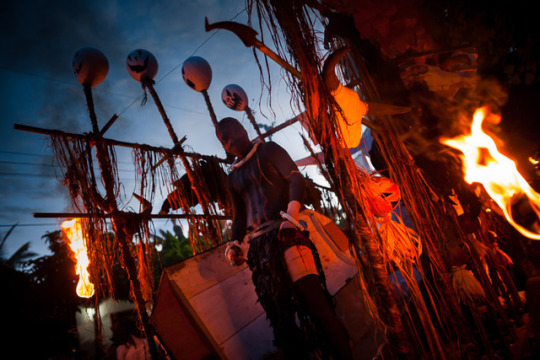

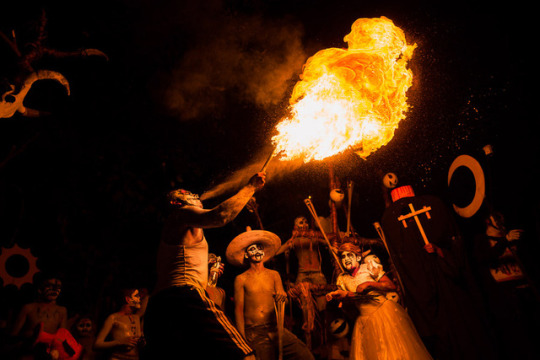
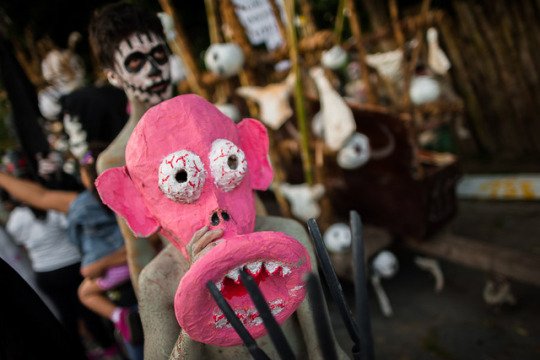

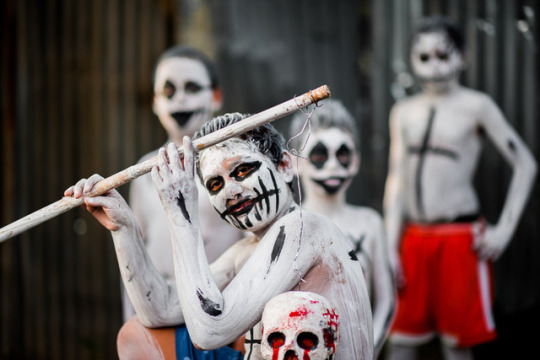
The festival, known as La Calabiuza since the 90s of the last century, joins Salvador’s pre-Hispanic heritage and the mythological figures (La Sihuanaba, El Cipitío, La Llorona etc.) collected from the whole Central American region, together with the catholic All Saints Day holiday and its tradition of honoring the dead relatives. Children and youths only, dressed up in scary costumes and carrying painted carts, march from the local cemetery to the downtown plaza where the party culminates with music, dance, drinking and eating pumpkin (Ayote) with honey. - Copyright © 2017 Jan Sochor Photography
#Day of the Dead#Día de muertos#halloween#all saints day#día de la calabiuza#la calabiuza#festival#mythology#el salvador
77 notes
·
View notes
Text
Cerro El Pital y El Picacho, The High Points of El Salvador and San Salvador
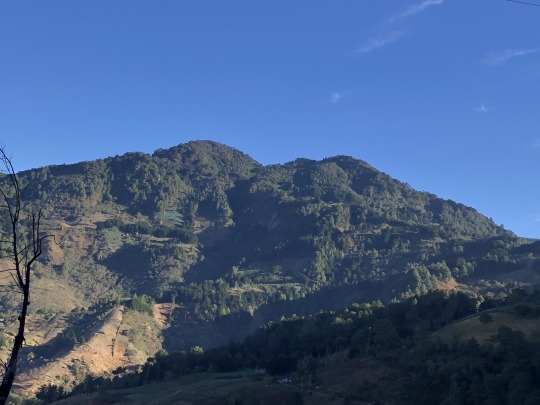
It took me 16 years, but I finally decided to return to my mother’s home country of El Salvador. The main purpose behind the trip was to introduce my new born son to my grandpa, but it wouldn’t be right to not hike several mountains while down there. I convinced Zach to fly down with my family, and he would be my hiking partner for most of the trip. He also joined on our previous trip to Guatemala, and had climbed a couple of volcanoes with me down there as well. I used Nahuat Tours as my guide service; they would arrange transport and the local guides when needed. There were some last minute complications due to the national election, which caused us to change our itinerary at the last minute, and while this would add some extra driving, the key objectives on my trip were still attainable. We planned to first climb Cerro El Pital in the morning, followed by El Picacho in the afternoon. Both were short hikes, so the challenge would be the long drive and dealing with the many unknowns of this developing country.
We were picked up at Cadedeu Residence at Lago de Coatepeque before sunrise. We first drove through San Salavdor and then up towards La Palma. We followed a steep but paved road up to Rio Chiquito.
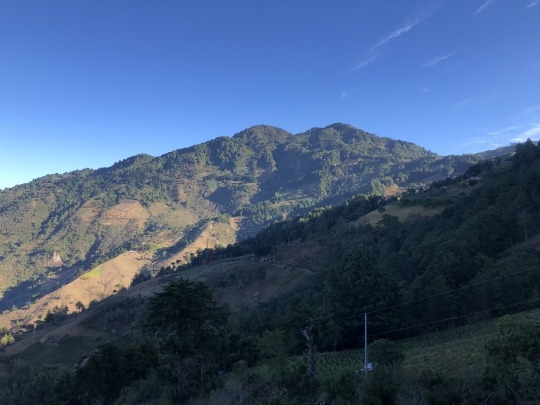
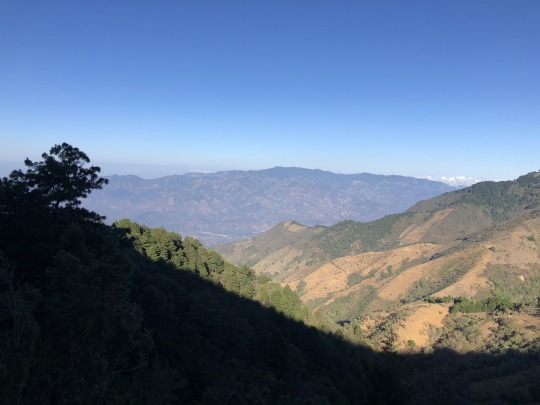
Our driver Eric parked at a dirt lot along Calle El Pital. We could have driven further, but we were here to hike and were already less than 2 miles from the summit. From here Gerardo would show us the way to the summit. Shortly after starting out, I noticed a snake that was run over by a vehicle, reminding me that it's probably best to stay on the cleared path. Shortly after we reached the park boundaries where Gerardo paid our entrance fees.
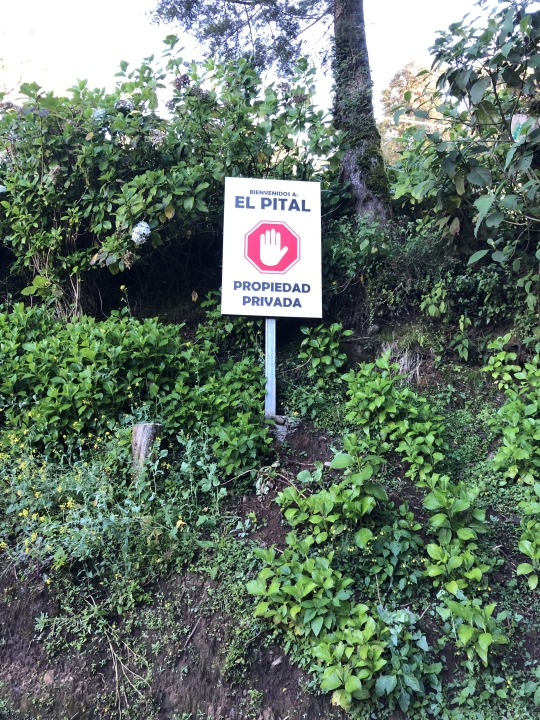
I was told to pack warm gear, as this is the coldest place in the country, but I found myself sweating profusely.
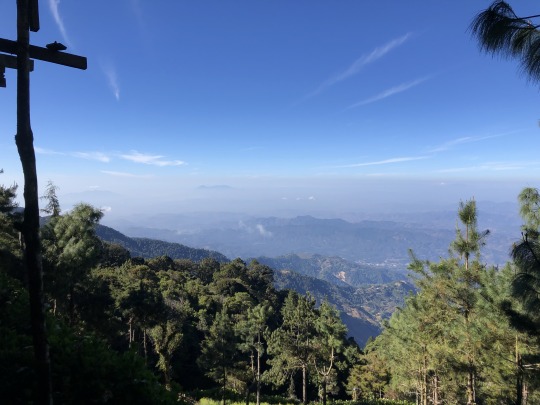
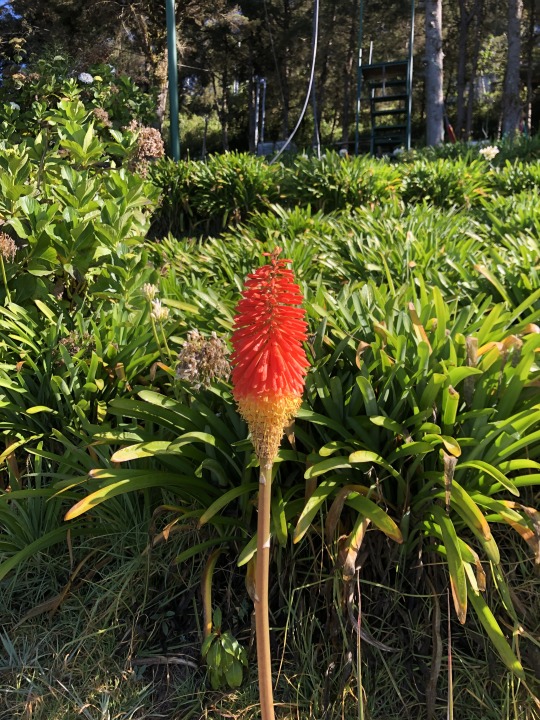
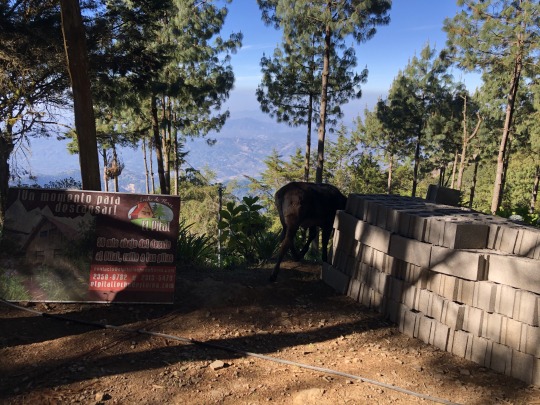
At the top of the road, Gerardo started taking us towards the lower southeast summit. I immediately objected, stating that the northwestern summit was higher. He agreed, but for some reason was hesitant to go further. He stated that he wasn’t sure how to get there, and said he would go ask someone. My stress levels skyrocketed, as failing on this easy peak was my worst nightmare. Gerardo came back confirming that there was a way to the summit, but that we shouldn’t follow the road. I learned later that Gerardo had been attacked by a dog along this same road on a previous trip. We instead dropped down to a grassy field at the saddle between the main peak and the false summit.
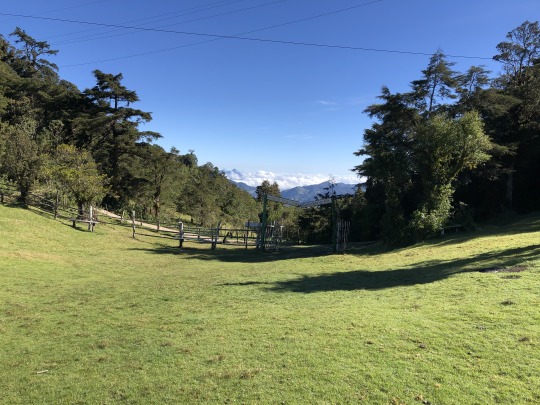
We followed a foot path that passed next to some buildings. Many homes were in the process of being built, and I expect this area to look much different in a few years. We popped out back onto the original road, and with the threat of the barking dog behind us, we continued upwards. The views opened up as we climbed higher, and it appeared that we were the only ones visiting the summit that day. We followed the main road all the way to the summit structure, where there were several guard dogs barking at us ravenously.
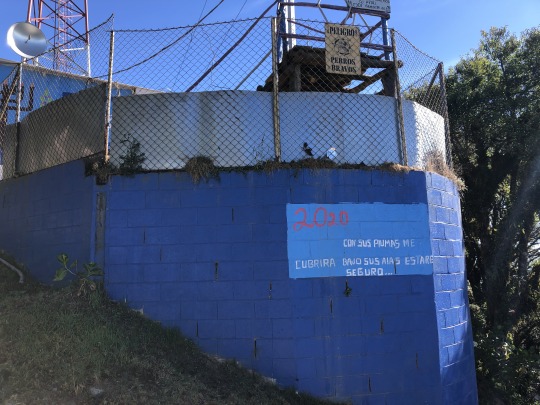
They were locked within the gate, so I paid them no heed. I found the benchmark embedded in a small concrete pedestal just to the left of the building.
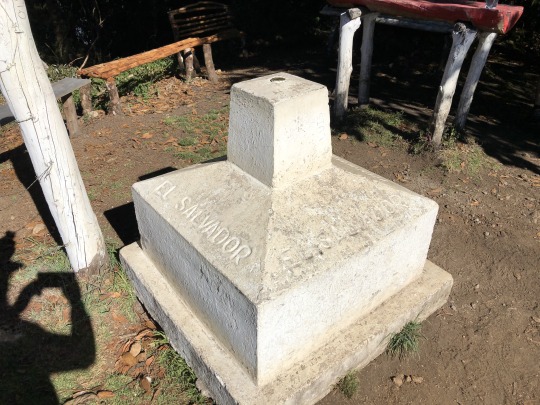
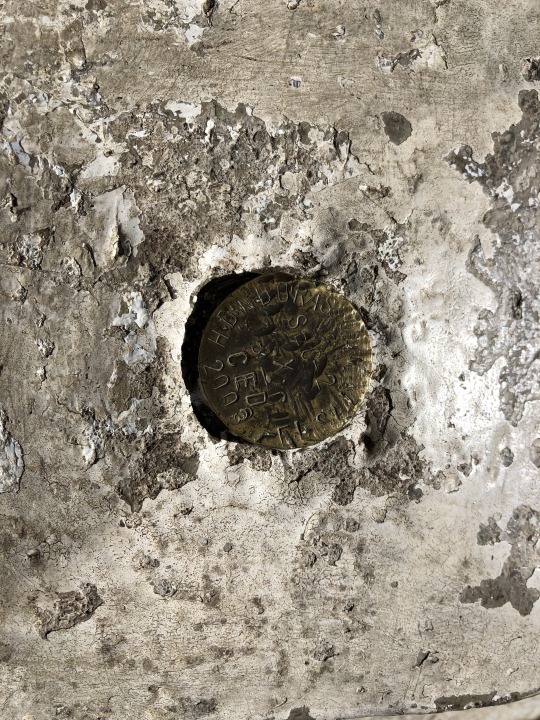
To the east was Honduras.
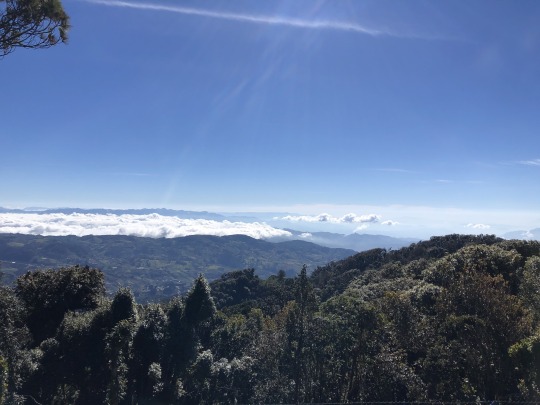
To the south-southeast was Chinchontepec, also known as San Vincente Volcano.
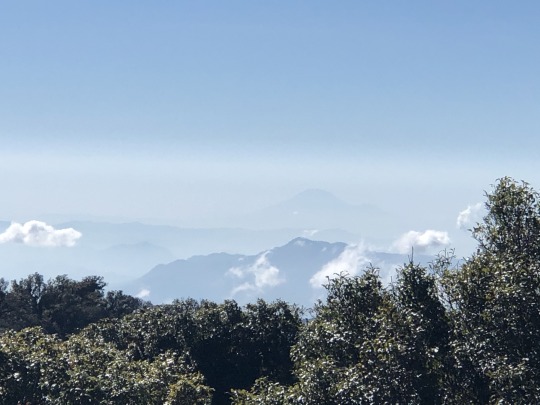
To the south-southwest were El Picacho and El Boquerón, also known as San Salvador Volcano.
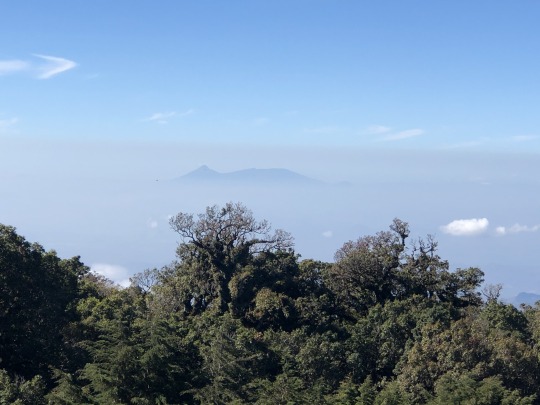
I had expected to find armed guards at the summit, but we were the only ones around. I guessed that all police were being mobilized elsewhere in preparation for the elections the following day.
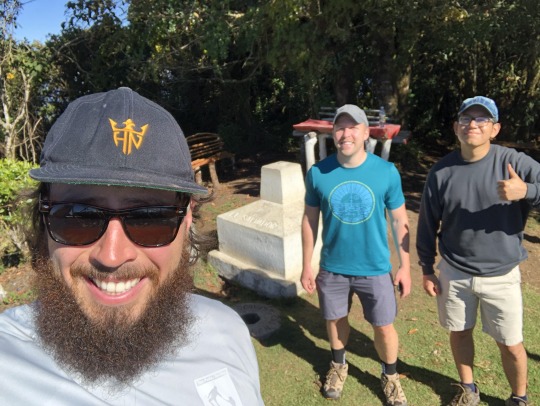
As this was also the border of Honduras, I took the liberty to walk into the aforementioned country. I did a small loop through the forest, checking another country off my list.
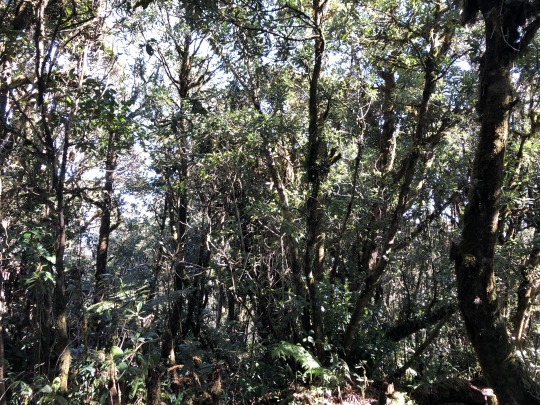
We hung out at the summit for a while, enjoying the peaceful and temperate setting.
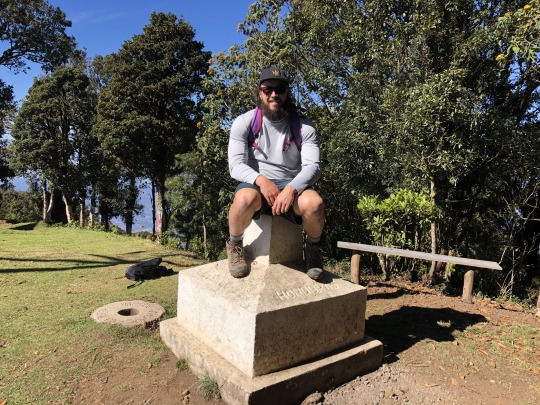
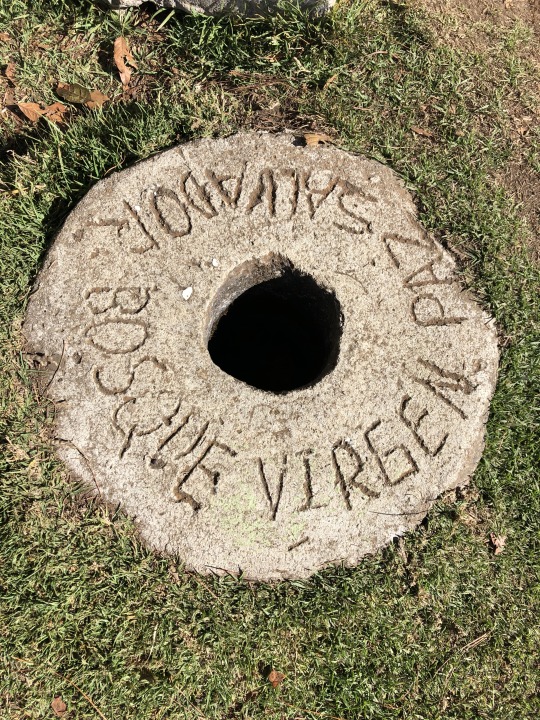
We started back down the road once we were satisfied. The cacophony of barking started up again as we passed by the building, but soon we were beyond the nuisance.

We stopped along the way to visit a second benchmark that also marked the border between El Salvador and Honduras. This was in the middle of some crops so we gingerly walked around it.
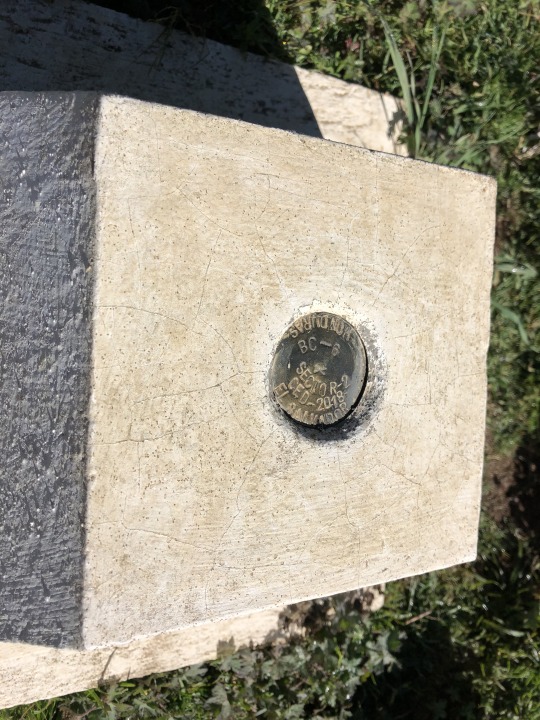
Once back at the saddle, I could finally relax and enjoy the great views.
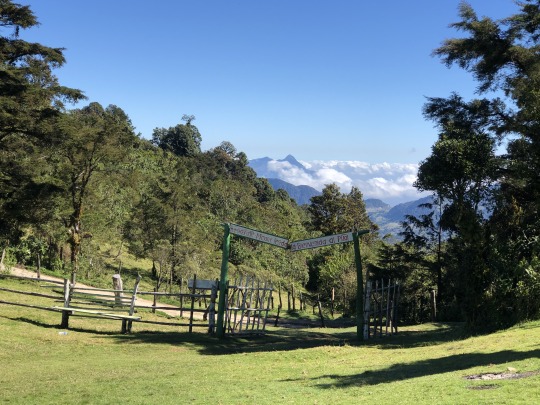
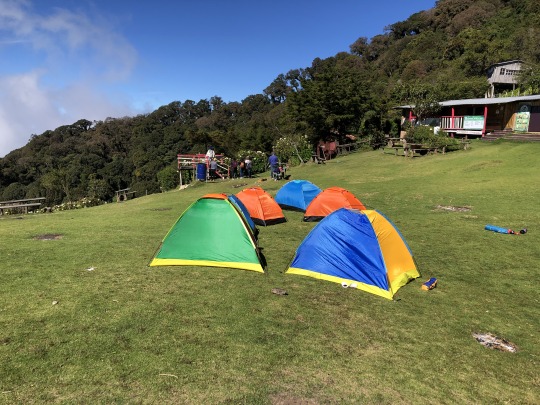
We considered exploring a potential bonus rock, but at the end decided against it. We couldn’t see any worthy rock outcropping from our vantage point, and I didn’t see anything on my satellite view. Instead we had brunch at one of the restaurants consisting of pupusas and coffee. We found Eric waiting for us at the top of the road when we finished, and we began our drive back down to La Palma where we stopped to buy some souvenirs.
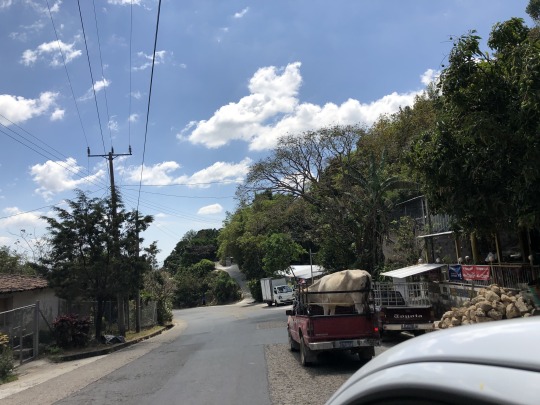
After another long drive we arrived at the trailhead for El Picacho. There was no information of this hike online, so I wasn't sure what to expect. Here we met our local guide Chico at a roadside pupuseria at the saddle between El Picacho and El Boquerón. We started up a local trail through a coffee plantation.
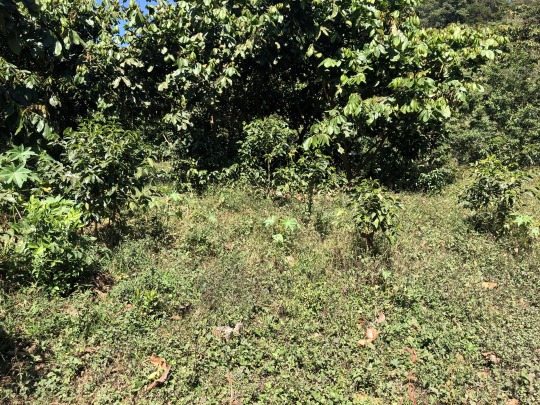
-El Picacho
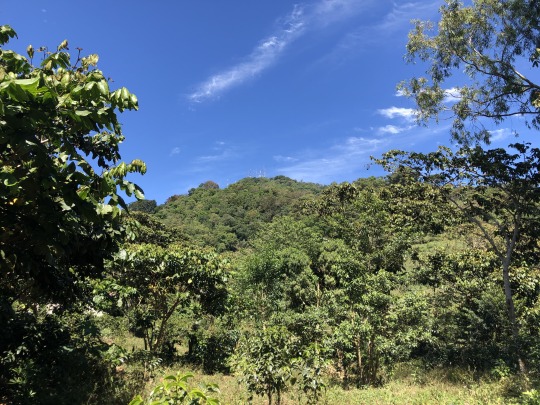
We hiked at an aggressive pace. Chico took the lead with his machete in hand. He would stop from time to time to tell me the local folklore, which really interested me. La Siguanaba was apparently seen in this area. This shapeshifter is viewed as an attractive woman who is often seen bathing in the river. She invites enticed men to come bathe with her, but as soon as they come close enough, she turns her head and reveals her terrifying face, which is sometimes depicted as a horse or a skull. The terrifying sight makes the men go crazy. This story is most likely used to deter unfaithful men from drinking and chasing other women. Often accompanying La Siguanaba is El Cipitio, her baby with a round belly and big sombrero. He doesn’t do much aside from throw flowers at women’s feet, but he seems to creep out many Salvadoran woman, including my mother. Chico then told me about El Gritón de la Medianoche, which translates to the yell of the middle of the night. This creature is apparently a very tall man with a mouth like a trumpet who screams incredibly loud. When he is far away, his scream seems to be coming from nearby. I found this fascinating as this is somewhat similar to North American bigfoot mythology; a tall humanoid screaming though the forest in the night.
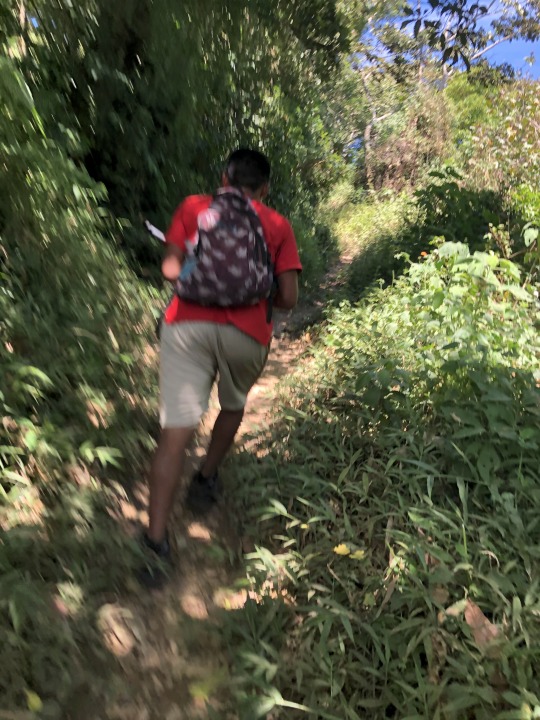
Chico stopped to show us some coffee beans growing alongside the trail.
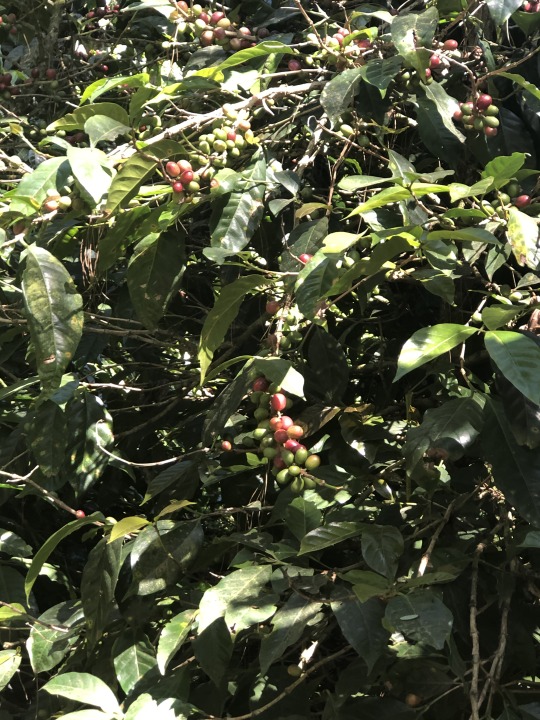
Gerardo explained how the beans can be prepared. Some European countries prefer the beans with the husk, while American coffee companies prefer the beans without. The beans are typically left in the sun to dry for a few weeks before they are exported. Gerardo then instructed us to suck on the bean, and we tasted the natural honey flavor from within the husk.
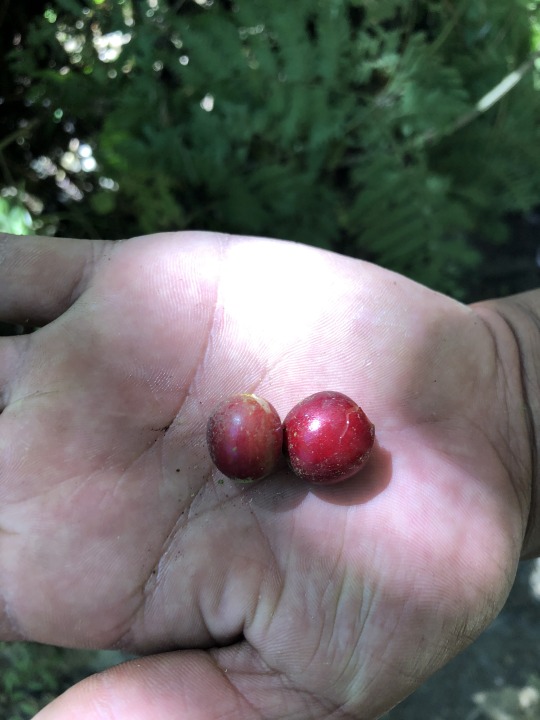
I’m not much of a coffee drinker so most of the dialogue went in one ear and out the other, but I think the average cafephile would find it quite interesting.
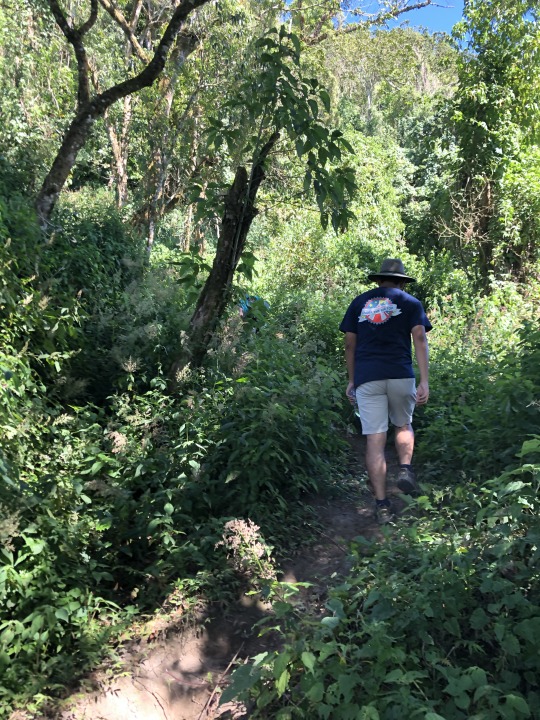
I took note of a pointy peak along the coast, which I believe was El Peñon de Comasagua.
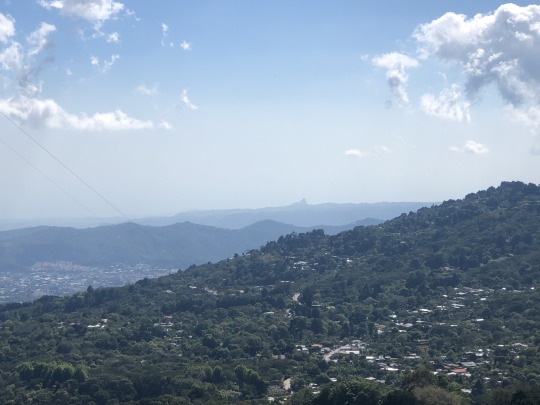
We reached a trail junction along the ridge where we also found an abandoned battery. Apparently these fortifications were not utilized much during the civil war as the Guerrillas never really contested this territory.
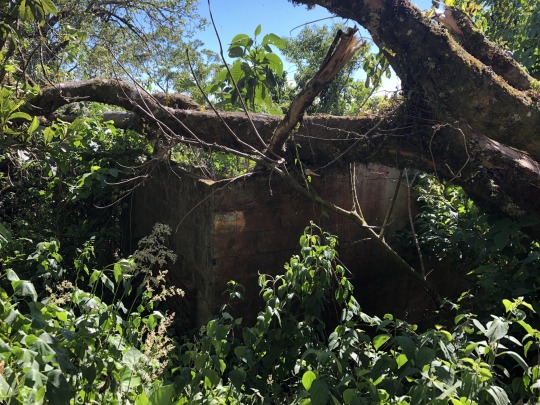
We stopped at a clearing where we had great views of San Salvador below.
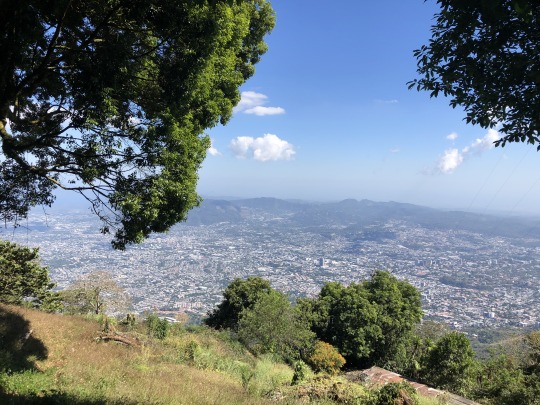
-Chinchontepec y Lago de Ilopango

I found a rope swing here, and it felt appropriate to risk my life on it.

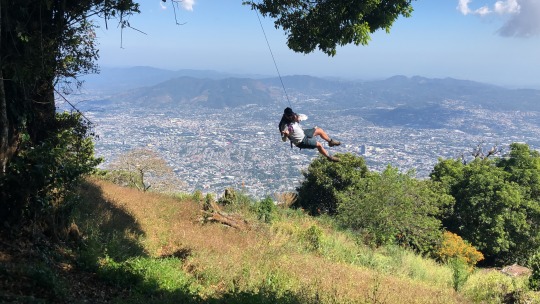
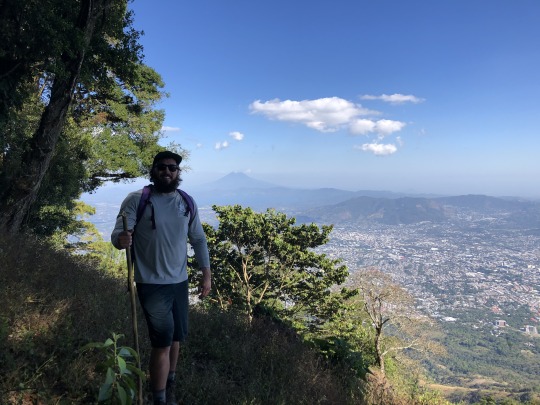
Chico then climbed a tree and cut off a plant with his machete. I still don’t know why.
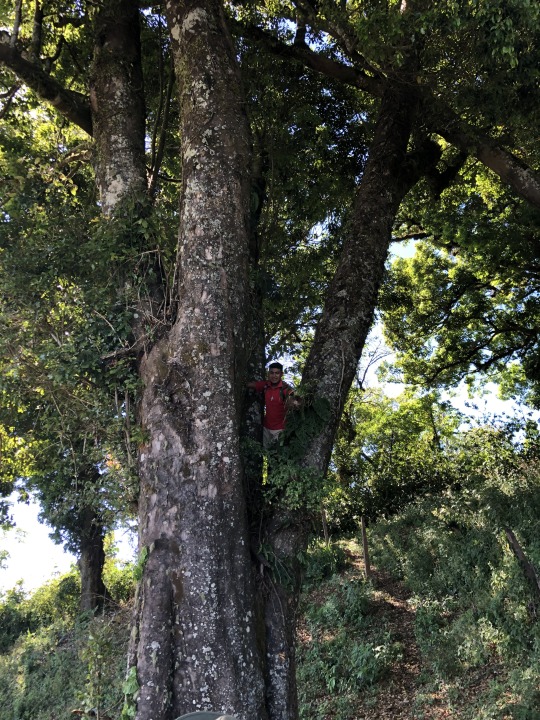
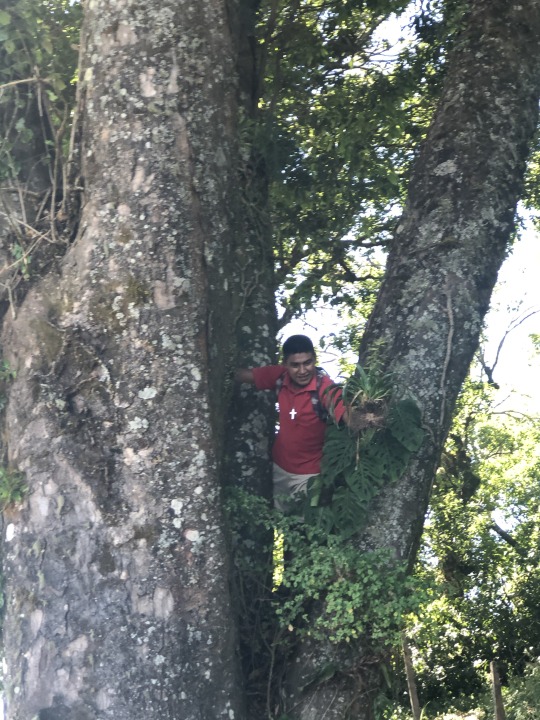
We continued along the trail, walking past a tree stand. I don’t think this was used for hunting animals.
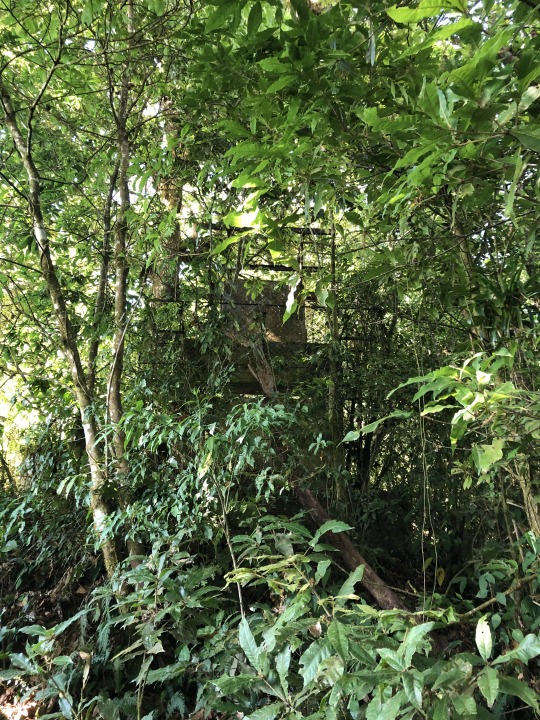
As we followed the trail underneath the eastern side of the peak, we heard a high pitched sound somewhere up ahead. I at first thought it was a bird, but as I listened more closely, it was someone squawking, “Ay loco, ay loco.” Chico immediately stopped and motioned us to be silent. He went off ahead by himself, machete in hand. I was very concerned for the few seconds he was gone. Upon his return he stated, “No te preocupes, solo es un bolito,” or “Don’t worry, it’s only a little drunk.” We continued forward, and just off the trail below us in a thicket was the bolito, yapping to himself. They say that the homemade moonshine brewed here makes people hallucinate and gives many young people sepsis. Or perhaps he simply saw La Siguanaba.
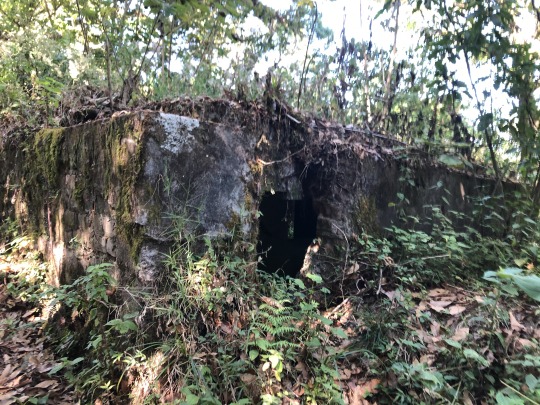
The trail eventually led to a road, which we followed a short distance to the radio structure at the top.

Again my stress skyrocketed. There was a watchperson, several guard dogs and a fence surrounding the radio facility. No trespassing signs were posted along the gate. We asked the watchperson if we could continue to the top, but he denied us, stating that there were security cameras throughout the summit complex.
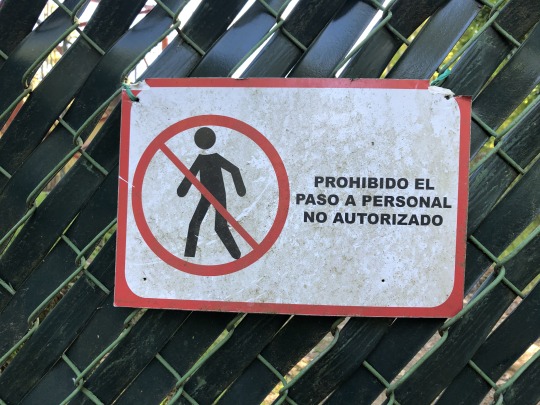
I was disappointed to say the least, so I went to the highest legally accessible point and snapped a photo.
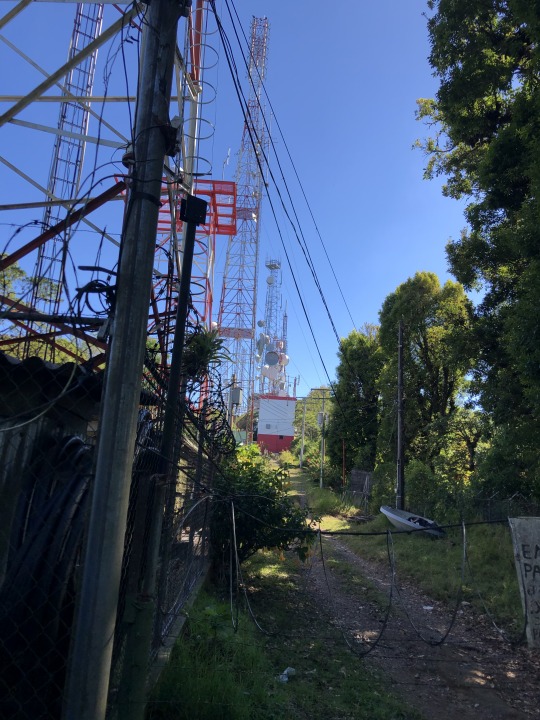
I stood there for a while, but there was no way around it. In my mind, I tried to justify the failure as a valiant effort nonetheless. My mind raced as I walked back down the road. I wondered if I could somehow still reach the summit while staying outside of the enclosure. I asked Chico if I was allowed to try from another angle, and he hesitantly agreed suggesting that it would be fine so long as I didn't cross the fence. Before he could change his mind, I began bushwhacking up the steep and loose east facing jungle slopes towards where I expected the summit to be. Snakes and guerrillas filled the back of my mind, while in reality all I had to contend with was thick brush and garbage. It seems that some of the tower workers simply throw their trash over the fence. I pulled on small trees and avoided stepping on the empty liquor bottles. At the end I was swimming through a grassy bush, and I eventually popped out at the fence, which was also the bulldozed high point.
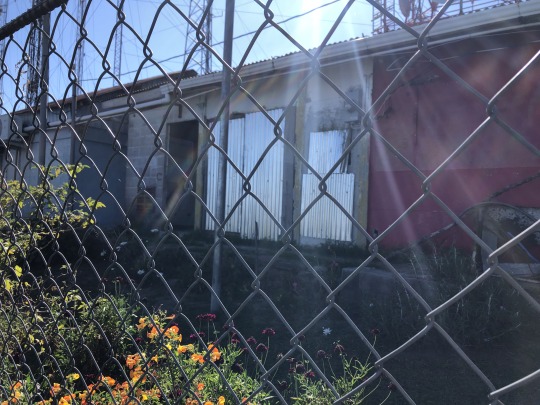
With my heart racing, I snapped a few photos. I should have been more patient, but the dogs from inside the complex were on to me. They had started barking, so as not to arouse further suspicion, I returned to the thicket.
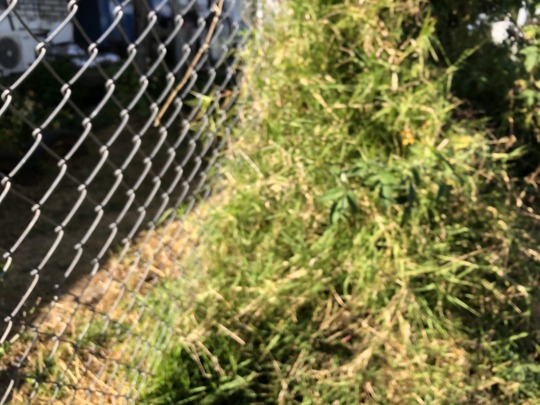
I snapped one last photo of Chinchontepec, Lago de Ilopango and San Salvador before descending.
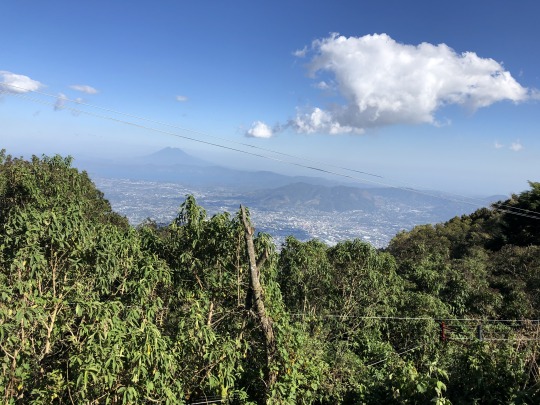
What a relief! I carefully descended the steep slope, but not carefully enough. I dislodged a big boulder from underneath the dirt, and this accelerated quickly towards where the others were waiting for me. I yelled rock, but Guillermo stood there like a deer in the headlights. Luckily, this boulder flew right past him and no one was hurt. The boulder continued to thrash down the steep volcano, and it's probably still falling today. The other's looked at me as if I was some sort of lunatic, and maybe they are right.
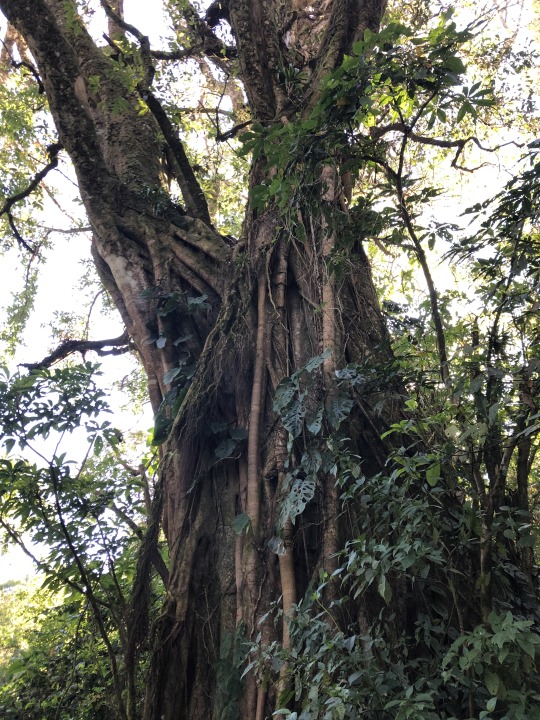
Our descent went quickly and soon we were back down at the saddle looking up at El Picacho.
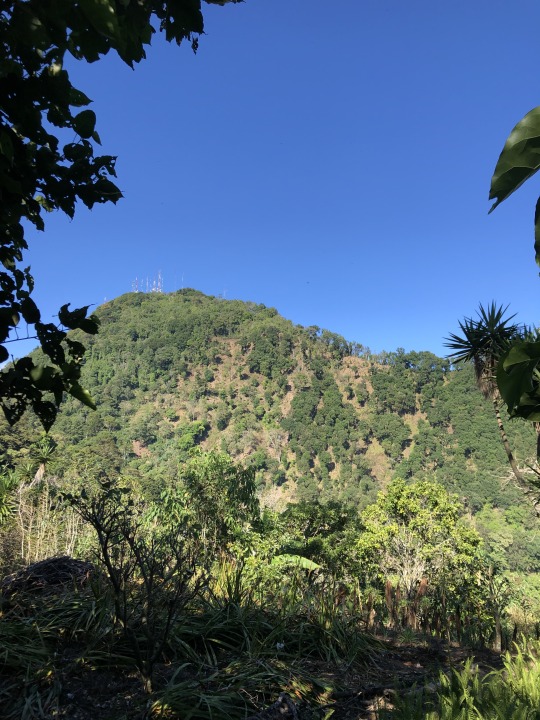
I had wanted to climb El Boquerón as well, which is the crater of the greater San Salvador Volcano, however there were some challenges. While it is possible to hike to the highest point along the crater, it's currently not the safest thing to do. Gerardo expects that in a few more years, the national park service will clean up the area, making it safer for hikers.
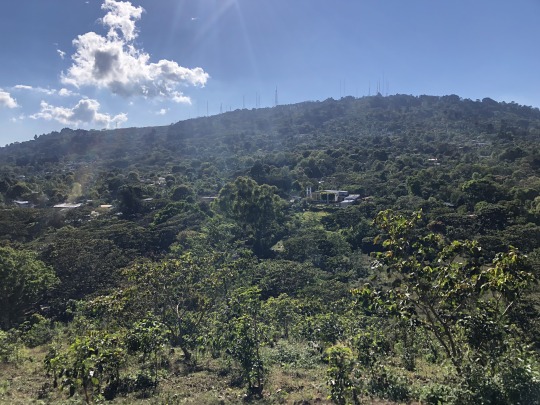
-Berries
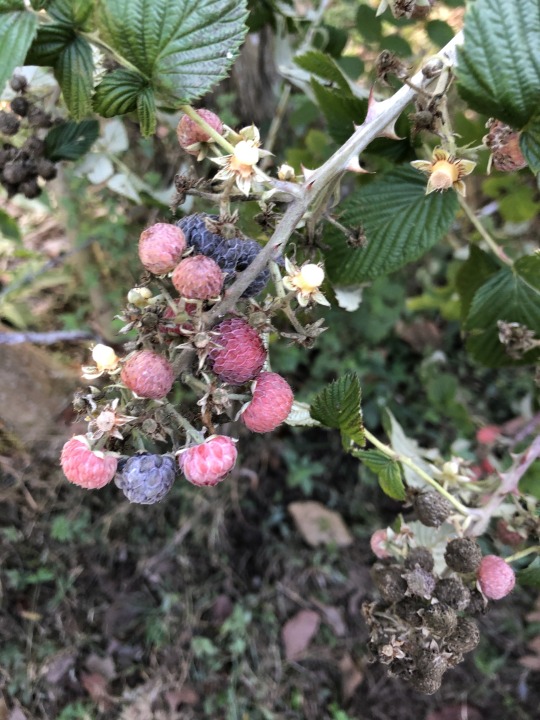
Once at the bottom, we ordered some yuca and chatted with the locals.
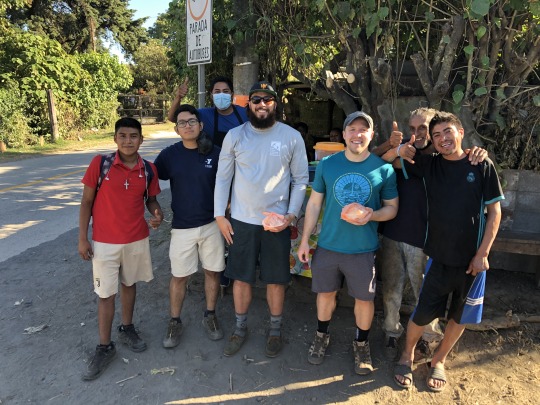
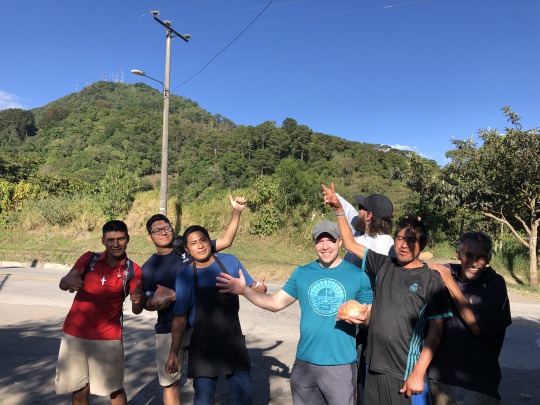
Zach got his yuca with chicharón and I got mine with Pepescas. Zach made the smarter decision, as I got pretty sick afterwards, so for all future hikers, get the pork!
1 note
·
View note